Creating brighter tomorrows

Supporting the educational outcomes of young Australians




























































































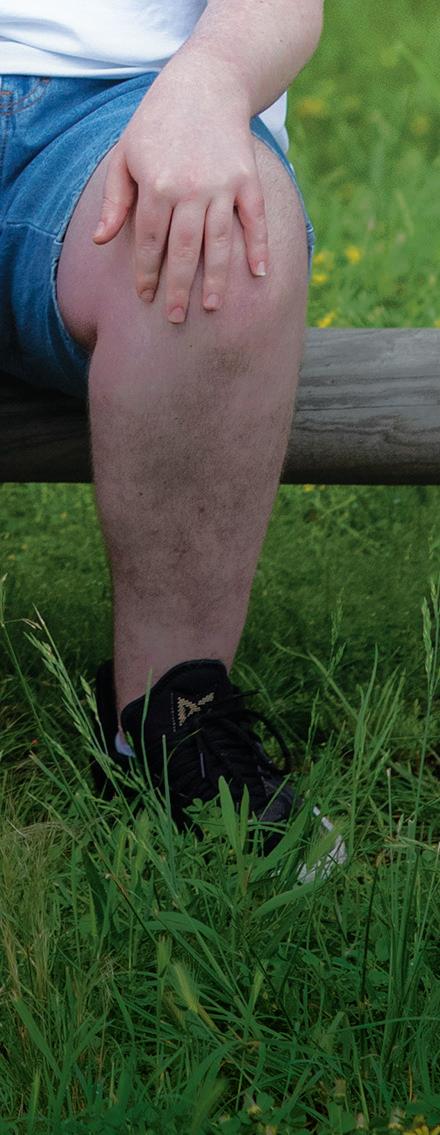







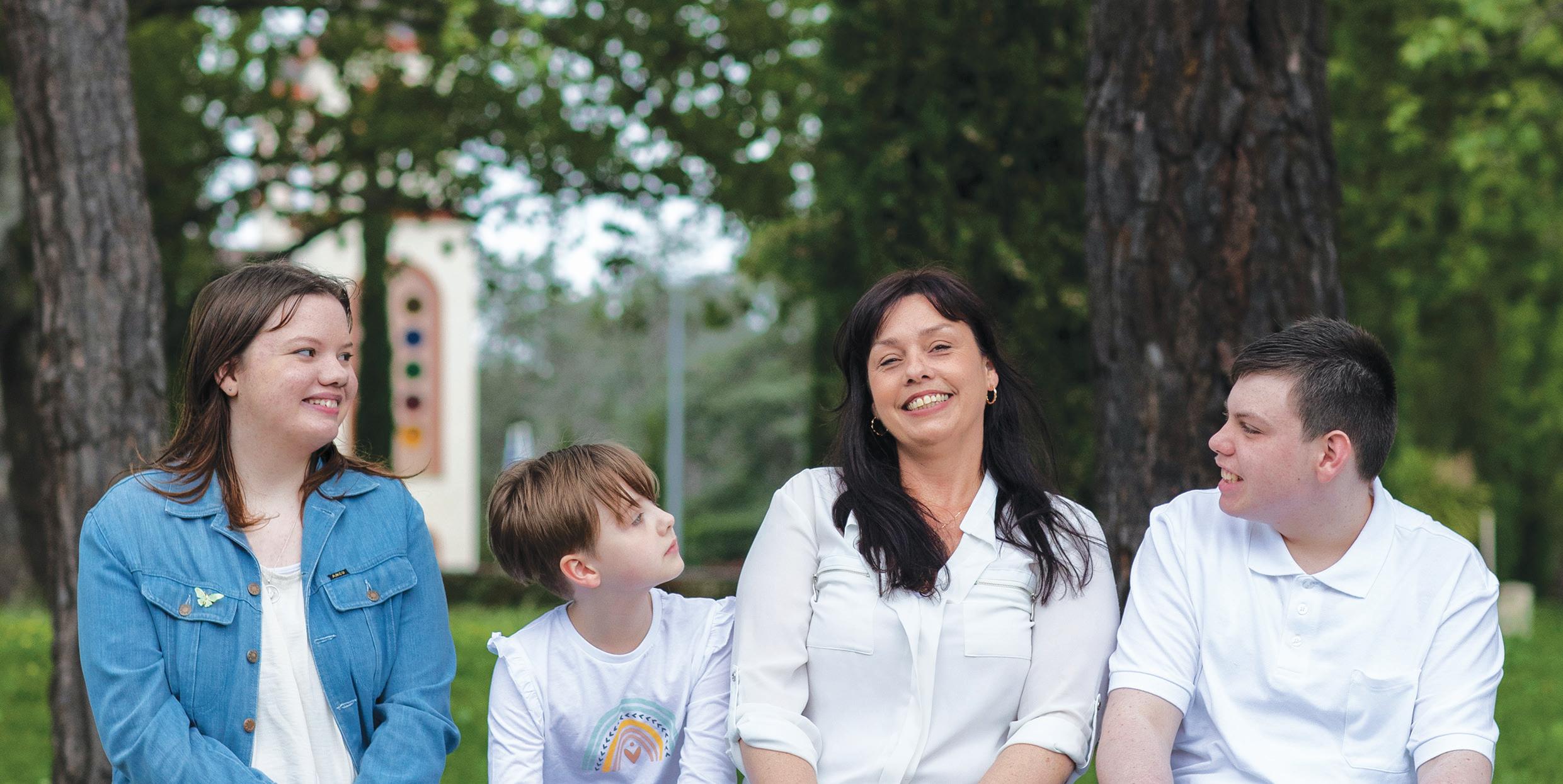 Cover and inside front cover: Learning for Life student Lilyana with her mother Kristie and siblings.
Cover and inside front cover: Learning for Life student Lilyana with her mother Kristie and siblings.
At The Smith Family, we believe education is a powerful agent for change. We work with children, young people and their families to help them overcome educational inequality caused by poverty.
Our approach is simple. It starts in early childhood, when we work with a child’s family and community to build the foundational numeracy and literacy skills children need when they start school. Later, we ensure children have the everyday essentials and extra support that they need to succeed at school. If students go on to tertiary education, we provide them with additional support and mentoring to continue their studies and – eventually – take the first steps in their chosen career.
To support children, we help parents, carers and communities to develop the confidence and skills they need to engage with their child’s education and enable them to build important life skills.
Message from the Chairman and the Chief Executive Officer










The Smith Family’s centenary 6 The problem 8 Our Five-Year Strategy







OUR VISION A world where every child has the opportunity to change their future.
OUR PURPOSE To overcome educational inequality caused by poverty.

OUR BELIEF Education is one of the most powerful change agents.


The Smith Family Annual Report 2021–22 1





At The Smith Family, we believe education is a powerful agent for change.
To support children, we work with their parents and carers helping them to engage in their child’s education. Our relationships with families are strong because our work with children is long-term. It can begin from early childhood with programs that build literacy and numeracy skills and continue through to the completion of their education at tertiary level.
In 2021–22, like for all Australians, COVID-19 was disruptive, and it proved to be particularly challenging for the families we support. However, our organisation’s focus on meeting the educational needs of children and families never wavered. We continued to apply our expertise to enable positive outcomes for children and their families throughout the year. We worked with our partners to help provide digital resources and internet access for families lacking these necessities so crucial for learning. And we worked with our school partners and in communities across Australia to maintain our support for those we help.
With our research demonstrating the effectiveness of our work, our goal is to ensure that more students can benefit. We were therefore pleased to increase the reach of many of
our programs this year. Around 60,000 students participated in our Learning for Life sponsorship program, an increase of 3.2% on the previous year. And we are delighted to report that we exceeded our Five-Year Strategy ambition to grow the overall number of children and young people we reach with our programs. Our target was 30% growth, but with a total of 159,753 children and young people participating in our programs in 2021–22, we achieved 33% growth in program reach over our baseline set in 2016–17.
The ongoing generosity of our supporters allowed us to sustain our support for children and their families. We are very grateful for the individuals, major donors, partner organisations, bequestors and VIEW Clubs of Australia, who gave a combined $122.5 million in funds this year for our work.
All three of our donor appeals exceeded target, resulting in $14.5 million in donations in total. We also worked to deepen the connection between sponsors and sponsored children on Learning for Life and were pleased to retain 90.96% of our child sponsors over the past year.
Donations from our philanthropic partners – including corporate partners, trusts and foundations, and major donors – totalled over $28.6 million, and we are grateful for their ongoing support.
Other highlights of our work this year included the development of our new Five-Year Strategy. Commencing in July 2022, the new strategy is focused on making sure our programs have an even bigger impact and on broadening our reach so thousands more children can take part. We have set a new strategic priority to expand digital inclusion, to ensure that all children and families we support have access to devices and internet at home.
During the year we worked to strengthen our program effectiveness including through a data exchange collaboration with the South Australian Department for Education. We launched the Education Dashboard South Australia, which provides our team members in that state with real-time access to educational data, enabling their work with Learning for Life students to be even more timely and targeted.
We were awarded $3 million in funding from the Australian Government Department of Education, to undertake a second phase pilot of our home-based online tutoring program, Catch-Up Learning. This follows the promising evidence highlighted in our Catch-Up Learning research report on what is helping students experiencing disadvantage to improve their literacy and numeracy skills.
Other program initiatives this year included working with Deloitte Australia to review our current operating model for Learning for Life to enhance high-level outcomes over time and find scalable changes we can trial to improve its effectiveness.
To enable the continued high performance of our team members, we introduced several initiatives to strengthen our team members’ skills and capabilities, improve our work, health and safety management, and upgrade our technology systems. In February 2022, we ran our regular Employee Engagement Survey and were pleased to see our employee engagement score increase to 75%, up two percentage points on the last survey in 2021.
This year we came together with our key stakeholders to celebrate our century of service to children and their families for our centenary year. Under the theme of “creating better futures together”, we highlighted the role that The Smith Family has played in Australian life and continues to play today. We also acknowledged and thanked our supporters for their contributions across 10 decades. We were especially delighted to have several of our Learning for Life alumni and families take part in centenary activities.
Our Five-Year Strategy which concluded in June 2022, had priorities to scale effectively, innovate, advocate, fund, data enable and digitise, and enable high performance.
As the current strategy came to an end, we began developing our next Five-Year Strategy to guide our work and meet the challenges of the future. To do this, we consulted widely with stakeholders, including the Board, school principals, supporters and team members. We also spoke to key sector leaders and futurists. Families and students were engaged as well, including through a survey to which 645 primary carers responded.
During this process, a range of insights emerged, including how the lives of young people experiencing poverty are increasingly complex, and that the widening digital and wealth divide is significantly impacting these same young people.
In developing the strategy, we acknowledge the pro-bono support of Bain & Company and thank them for their expert help.
We have settled on eight strategic priorities to deliver across the next five years. These are to strengthen the impact of Learning for Life; leverage a greater range of partnerships for program delivery and increase program digitisation; expand digital inclusion for Learning for Life students; grow our reach; increase our influence; increase sustainable funding; empower our people; and invest in our data, technology and digital capability.
These priorities give us a framework for achieving our overriding goal of deeper impact, supporting better educational and life outcomes for students and families, and growing our influence on the services and systems that affect the lives of children and young people in Australia more broadly. They also reflect our understanding that digitisation and digital inclusion will be critical for the success of both the students we support and our organisation over the next five years and beyond.
We have already started work on this area. In 2021–22, we undertook a review and refresh of our digital and IT strategies with Bain & Company again providing valuable pro-bono support. The review also benefited from the generous input of an external digital transformation expert and the members of our Information Systems Advisory Group. It found we need to focus on workflow automation, continuing to establish technology infrastructure and process foundations, and progressing towards agile best practice in our ways of working to enable our new strategy.
In 2021–22, we continued to implement a range of digital initiatives designed to grow our innovation capability and ensure the way we interact with key groups is as effective and streamlined as possible. Central to this is asking for and incorporating feedback from families and our supporters. Their input helps us to refine and improve our services to better address needs and expectations.
During the year we also reviewed our identity and expression to better reflect and communicate who we are and what we do. For 100 years we have been responding to the needs of the Australian families we support, but now, through the provision
We exceeded our Five-Year Strategy ambition to grow the number of children and young people we reach with our programs, achieving 33% growth against our target of 30%.
All live in low-income families
of our education support programs, we are helping children to focus on their learning today, so they have the opportunity to change their futures tomorrow. After extensive stakeholder consultation, including with our families, donors and sponsors, we updated our brand expression. Our new logo and motto Learn today, change tomorrow tells our modern story and connects our purpose and our organisational strategy with our goals.
We continued to work to understand what influences young people’s postschool pathways, and how we might better support them to be in work and/ or study post-school.
and Torres Strait Islander Peoples. Members of the group generously provide us with insights, guidance and wisdom, and we are hugely grateful for their support.
To ensure we can support students to achieve strong educational outcomes, we continue to build our cultural competence. This is vital for our ability to listen well, adapt and grow as we work beside the families we support.
This year, we facilitated a Be Brave. Make Change through Reconciliation webinar for our corporate partners and their teams. This featured case studies and learnings from three of our corporate partners – King & Wood Mallesons, Officeworks and Pfizer Australia.
More than half live in a single-parent family
Around one-third of students and a similar proportion of parents and/or carers have a disability or health issue
About half have a parent or carer who didn’t finish Year 12
In the second year of our three-year longitudinal research project – the Pathways Engagement and Transitions Project – more than 4,100 young people who participated in Learning for Life in 2020 took part in a survey to help us understand their level of engagement in work, study and training. Sixty of them also took part in an in-depth interview, sharing their insights on the factors that are shaping that engagement.
This year’s research found that 84% of the Learning for Life students who were in Year 12 in 2020 were in work or study 18 months after leaving school, which is a very strong result.
Data from this nationally significant project, which is funded by the Paul Ramsay Foundation, are providing new and unique insights for governments, not-for-profits, schools, universities and business to work together to enable young people to achieve better outcomes post-school.
The Smith Family is committed to being a child safe organisation. We continuously monitor our work in this area via two national governance groups: our National Child Safety Group and the Executive Child Protection Group. This year, the Executive Child Protection Group conducted an organisation-wide review of our implementation of the National Principles for Child Safe Organisations. This will guide our priorities and accountability in 2022–23.
Around three quarters have a parent or carer who is not in paid employment
One in six participating in our Learning for Life program live in families that don’t have a computer or tablet connected to the internet at home
Of the 59,845 Learning for Life students supported during 2021–22, 13,304 identified as having Aboriginal or Torres Strait Islander backgrounds. This equates to 22.2%, surpassing our Reconciliation Action Plan target of 20%.
Our Reconciliation work is informed by input from a range of external stakeholders – including our Advisory Group on Issues Concerning Aboriginal
We also undertook a consultation process to guide our engagement with groups of children, students and families to inform our decisions at an organisational level. In 2022–23, these consultations will inform a newly-funded project – Nothing about us without us – that will enable us to ‘try, test, learn and share’ to engage students and families in organisational level decisions that affect them.
Other key initiatives this year included reviewing all our national, state and territory-based information and training materials. We also launched a new All About Child Protection intranet site – an up-to-date, trusted and accurate resource for all child safety related activities.
Here are some of the complex and often compounding challenges faced by students supported through our Learning for Life program:
The ongoing COVID-19 pandemic continued to drive general economic and financial uncertainty this year. Despite this, our total revenue was similar to 2020–21, which was a record result for our organisation.
Revenue from our fundraising activities was marginally higher than the previous year, exceeding our expectations, but was offset by a decrease in Government funding.
We were overwhelmed by the generosity of donors who supported our appeals. During the first year of the pandemic, we received more donations than usual, and pleasingly this held up in the second year of COVID-19. Our Winter Appeal achieved a new record result, raising approximately $7.5 million.
Despite these positive results, it was a challenging year for recruiting new child sponsors. Our Back to School Appeal – our biggest sponsorship drive of the year – coincided with a significant drop in consumer confidence that impacted donors committing to regular giving. Despite this challenge, we acquired nearly 10,000 new sponsorships or 84% of our target for the year.
In 2021–22, our philanthropic partners continued their unwavering support. We are particularly grateful to our partners ANZ, Officeworks and the Paul Ramsay Foundation for their significant support for our work. We were also grateful to receive additional donations from partners for families on our Learning for Life program affected by natural disasters – these went towards helping families replace their children’s educational items.
Our operating result for 2021–22 was a net surplus of $1.4 million. This was a significant reduction from the surplus of $28 million in 2020–21 (which was an exceptional year), but we continue to remain in a strong financial position.
Our continued fundraising success has enabled us to extend our reach and program depth and provide additional support to families during the year. However, the ongoing economic uncertainty remains
concerning, especially as the support we provide for each student is often for more than a decade. At the end of the financial year, we committed to help almost 60,000 Learning for Life students for the duration of their educational journeys. This commitment incorporates our annual support of around $88 million per year.
Looking ahead, our financial reserves will underpin our financial sustainability and our ability to support our students and families over the long term. It will also enable us to meet the objectives we set for the next Five Year Strategy cycle.
We have a number of groups to thank this year and start with the families we support and their children for their continued commitment to education.
We thank our Patron, the Governor General, His Excellency General the Honourable David Hurley AC DSC (Retd) and Mrs Linda Hurley, who continues in her role as VIEW Clubs of Australia’s Patron.
Additionally, we thank the members of the Board and our advisory groups for their time, skill, insight and good humour.
We thank our sponsors, donors and volunteers; our corporate, trust and foundation, university and community partners; and all governments that provide much-needed funding.
We also thank members of VIEW Clubs of Australia for their long-standing and much-valued fundraising, volunteering and advocacy support.
We acknowledge and thank our partner schools for their shared commitment to our mission, as well as the many non government organisations we worked with during the year.
As always, we are appreciative of the support provided by our Ambassadors – television presenter Sarah Harris and joint 2019 Australian of the Year Dr Craig Challen SC OAM, and our two Centenary Champions, Wendy Harmer and Brooke Boney.
Finally, we want to acknowledge our incredible team members, who have shown exceptional dedication, adaptability and resilience in the face of yet another difficult year. Their unwavering commitment and hard work – often while also juggling the demands of lockdowns and managing home learning, caring for relatives and dealing with illness in their own homes – allowed us to keep supporting thousands of children and young people.
Changing lives requires a long-term commitment. We are therefore grateful for the ongoing support of these dedicated people and groups, and we look forward to working with them towards this goal well into the future. Together, we will help even more young Australians create for themselves futures of promise and potential.
Nicholas Moore Chairman Doug Taylor Chief Executive OfficerThis year marks the organisation’s first year of leadership under Doug Taylor as CEO. Over the course of the year, Doug spearheaded a review of our structure and ways of working to ensure we can effectively enable and support our new Five-Year Strategy.
Several changes to executive portfolios are being implemented in the second half of 2022 following recommendations arising from our recent Organisation Design Initiative to
enhance collaboration and to support teams to achieve greater efficiency and effectiveness.
During the year, we said heartfelt goodbyes to a couple of long serving Executive Team members. We acknowledge the exceptional contributions made by Judy Barraclough, Deputy Chief Executive Officer and Head of Philanthropy and Strategy, and Annette Young, Head of People and Culture over their many years at The Smith Family.
This calendar year marks The Smith Family’s 100th year of working alongside families to improve the lives of Australian children living in poverty.

Our story began on Christmas Eve in 1922, when five businessmen banded together to deliver gifts to children in a Sydney orphanage. That saw the creation of an organisation that for 60 years focused on welfare assistance and emergency relief, before we shifted in the 1980s to support the education of children experiencing disadvantage, as a practical way of helping them create better futures for themselves.

Our centenary year presented an opportunity to reflect on our history, consider our present and look to our future, while taking team members, families, volunteers, VIEW Club members and supporters, past and present, on a unique journey.
We kicked off the centenary celebrations in December 2021 with an official launch for team members to commemorate this special occasion. The launch coincided with our annual Christmas toy and book distribution to families, a 10-decade-long tradition.


In a special film to mark our history, students, alumni, families and longstanding team members and volunteers shared how The Smith Family has been a much-valued part of their lives.
We also launched a centenary website to document our history. This includes a timeline of key events from the past 100 years, a social history of the organisation written by sociologist and historian Tanya Bretherton, and films and stories that bring our work to life: www.centenary.thesmithfamily.com.au
We were thrilled to welcome journalist and author Wendy Harmer as our first Centenary Champion. She worked with longstanding Ambassador, Channel 10 television presenter and journalist Sarah Harris, to promote and celebrate The Smith Family throughout the year.
In December we were part of the City of Sydney’s New Year’s Eve celebrations, as the event’s official charity, and our logo featured on a Sydney Harbour Bridge pylon. We are excited to continue the relationship again in the coming year.
In February, our inaugural Patron, the Governor General, His Excellency General the Honourable David Hurley AC DSC (Retd), hosted a reception at Admiralty House in Sydney to celebrate with students, families, volunteers, donors, VIEW Club members, supporters and other partners.

During the event we heard from Gamilaroi person, Teddy Collier-Caldwell, who explained how support from The Smith Family enabled them to become the first person in their family to go to university. Now they want to give back by becoming a teacher in rural and remote communities, providing local students with a role model and a pathway to success.
Channel 9 presenter and journalist Brooke Boney, another proud Gamilaroi woman, was announced as our second Centenary Champion in April. Brooke is sharing her story and early experiences of growing up to highlight the value of unlocking children’s potential through education.

In April, we received a warm congratulatory message from a former Smith Family board member and current ABC Chair, Ita Buttrose. She wrote: “You are helping young Australians in need to make the most of their education and break the cycle of poverty. Here’s to the next century!”

The following month, we held a centenary webinar for our corporate partners, to discuss how targeted educational support assists young Australians in need.


Australian Secondary Principals’ Association head Andrew Pierpoint, higher education specialist and Pro Vice-Chancellor Indigenous Strategy at Macquarie University Dr Leanne Holt, and Professor Kristy Muir, Chief Alliances Officer with the Paul Ramsay Foundation, generously shared their knowledge.
At the midpoint of the year we marked the ‘Now’ phase of our centenary by producing a film highlighting The Smith Family’s work today. We heard from five outstanding young students – Alliance, Susu, Quinny, Bobby and Seynab – who are all excellent role models and living proof of how education can open new opportunities.
We will continue to acknowledge our staff and all our supporters for their commitment to the education of young Australians and their families, as we head towards December 2022 when our commemorations conclude. With the former and current support of all these key groups, our organisation is proud to have made a world of difference to thousands of children across Australia. We thank you all.
In our centenary year, we acknowledge and thank our volunteers for 100 years of volunteering. See more on volunteering across the years on page 63.
“My dream is to teach in rural and remote communities. I want to bridge the gap between Indigenous and non-Indigenous children, to give kids the resources they require to achieve their own dreams, like what my own family and The Smith Family did for me. I understand the importance of teaching children the basics – but I also know the importance of teaching children kindness and respect.”
Teddy Collier-Caldwell Learning for Life alumni
The risk factors that can lead to educational disadvantage can begin in a child’s early years and continue throughout their school lives. Over the years, the impact compounds, and for some, it can lead to poorer overall educational and life outcomes. Despite the resilience and commitment of parents, this cycle shows that the contributors to disadvantage are complex and that without the right support at the right time, disadvantage can be long‑term and intergenerational.
These include sickness, disability, unemployment, difficulty affording basic living costs, inability to provide resources for their child’s education, limited access to digital technology and skills, and a lack of knowledge or confidence about how best to support children’s educational development.
Inability to get ahead in life, health and wellbeing affected, passing disadvantage on to the next generation.
Behind in essential skills when they start school, not having the items they need to fit in, having limited access to resources for learning development, falling behind at school and facing difficulty in catching up, and having limited access to the support needed for guiding study and/ or career paths.
A lack of engagement and motivation with their education, lower educational performance, leaving school early with few or no qualifications, fewer job opportunities, and having limited connections to community networks and services.
In Australia, 1.2 million children and young people live in poverty.1
On starting school, one in three children in Australia’s most disadvantaged communities are developmentally vulnerable in at least one key area.2
Just 57% of Year 5 students whose parents have not completed Year 12 surpass the national minimum numeracy standard for their year level. Among Year 5 students whose parents have a university qualification, this figure is 94%.3
The cost to the community in lost earnings, tax receipts, and health and welfare costs for each early school leaver over their lifetime is conservatively estimated at $1 million.4
Around 49% of 24‑year‑olds from the most disadvantaged backgrounds are not fully engaged in work or study, compared to 18% of those from the most advantaged backgrounds.5
1 Davidson, P, Saunders, P, Bradbury, B and Wong, M (2020), Poverty in Australia 2020, Australian Council of Social Services (ACOSS) and University of New South Wales Poverty and Inequality Partnership report series, No. 3, Sydney: ACOSS.
2 Australian Government (2022), Australian Early Development Census National Report 2021: Early Childhood Development in Australia. Canberra: Department of Education, Skills, and Employment.
3 Australian Curriculum, Assessment and Reporting Authority (ACARA) (2021), National Assessment Program – Literacy and Numeracy Achievement in Reading, Writing, Language Conventions and Numeracy: National Report for 2021. Sydney: ACARA.
4 Lamb, S and Huo, S (2017), Counting the costs of lost opportunity in Australian education, No. 2, Melbourne: Mitchell Institute
5 Lamb, S, Huo, S, Walstab, A, Wade, A, Maire, Q, Doecke, E, Jackson, J and Endekov, Z (2020), Educational opportunity in Australia 2020: Who succeeds and who misses out. Centre for International Research on Education Systems, Victoria University, for the Mitchell Institute: Melbourne.

“I just want my boys to have the best education they can possibly have and succeed in life.”Kylie, Learning for Life parent with her children Max and Jacob.
“My sons, Max (Year 5) and Jacob (Year 3), both have sponsorships with The Smith Family, which is fantastic. It pays for some of their schooling needs and things like school bags and shoes when they’ve got holes. It helps because it means we can put other money away so we can do other things.
Max enjoys the Learning Club through The Smith Family, which is Tuesday afternoons after school. Last year, he did the student2student reading program. The extra support has helped Max a great deal. Both boys had speech delays. I think with reading, that’s where they have struggled a little bit, so the support helps. I think Max would cope, but he might also struggle just that tiny little bit to keep up.
Last year, Max was struggling with being at home and doing remote learning. When he was offline, he’d get upset. The student2student program got him through because his buddy was really supportive.
I did The Smith Family’s Let’s Count program. It was an eye-opener. It helped me because maths has changed since we all went to school. When the boys come home with maths homework, it’s easy to help because I know all the basics now, and how they’re being taught.
I enjoyed school, but I had two years in high school where I was bullied because I had a lisp and wore glasses. I know that still happens now. I just want my boys to have the best education they can possibly have and succeed in life.”
Our Five-Year Strategy provides a framework that helps us to better support children and families to thrive in our rapidly changing environment.
Our Five-Year Strategy
Our six strategic priorities – scale effectively, innovate, advocate, fund, data enable and digitise, and enable high performance – have given us a framework to achieve our goal of reaching more young Australians with our evidence based programs and clear targets to track our performance. Here are some highlights across five years of progress.
Grow our reach by 30% over five years while maintaining the effectiveness of our programs.
Across five years we achieved 33% growth in the total number of young Australians reached with our programs, against our 30% target set in 2016–17, ending with a total of 159,753 participants in 2021–22. The number of Learning for Life sponsorship students increased from around 39,000 in 2016–17 to 60,000 in 2021–22, or 54% growth. A four-year funding commitment of $48 million from the Australian Government enabled 24,000 additional students to join Learning for Life by 2020.
We reviewed our operating model to ensure the ongoing effectiveness of our approach. We developed two Reconciliation Action Plans (RAPs), and in 2020–21, 22.2% of Learning for Life participants identified as Aboriginal and Torres Strait Islander people, against our RAP target of 20%.
Innovate to enable the children and young people we serve to thrive in a rapidly changing and increasingly challenging environment.
Be an authoritative and influential advocate with those who shape public policy on behalf of disadvantaged children and young people.
Develop a sustainable funding base to fund our scaling up and strategic initiatives.
In 2017–18 we established a Program Innovation Lab (now the Design and Insights Team) to design and test new programs in rapid, efficient and user-centric ways. By 2021–22, the Lab had been involved in the development of new programs like Future Seekers, and helped increase the representation of family voices in our work through the Family Experience Project. For three consecutive years, we were recognised for our innovation in the Australian Financial Review’s Most Innovative Companies List. We also established the Agile methodology to transform and speed up how we deliver initiatives.
Over the five years, we developed more than 163 advocacy products, including publications, policy submissions and conference presentations. We actively shared our research and data covering topics such as the relationship between key educational outcomes as children move through school, young people’s views on poverty and social exclusion, and families’ experiences of COVID-19 and its educational impacts.
We saw strong growth in new sponsors across all five years and also received significant financial support from our donors and corporate partners. By 2021–22, funds raised from individuals, major donors, organisations, bequestors and VIEW Clubs of Australia had reached $122.5 million, up from $73.6 million in 2017–18. This giving will help sustain the increased number of children and young people brought on as program participants.
Amplify and accelerate our mission through digital and data.
Be a destination employer in our sector. Ensure systems are scalable and fit for purpose.
We developed our Data Enablement Strategy to deliver greater impact. We refreshed our digital strategy and delivered digital solutions to improve families’ access to our programs and supporters’ service experiences. To combat the digital divide exposed by COVID-19 pandemic restrictions, 6,438 Learning for Life participants have been recipients of our Digital Inclusion packs. And in groundbreaking work, we finalised a data exchange agreement with the South Australian Department for Education and launched a dashboard enabling our access to real-time educational data on Learning for Life students, meaning we can provide them with more timely and targeted support.
We introduced several initiatives to enable high performance, including building a more inclusive and diverse culture, strengthening our team members’ skills and capabilities, improving our work health and safety management, upgrading our technology systems, and making our workplace more agile. The benefits of these initiatives have been reflected in the results of our regular Employee Engagement Survey, which show our Employee Engagement Score has increased from 68% in 2017–18 to 75% in 2021–22.
✔ 159,753 children and young people participated in our programs.
✔ We embedded practice frameworks and undertook a Learning for Life model review.
✔ We mapped current practice to inform our Student and Family Engagement Project in 2022–23.
✔ We developed a content strategy for families, to optimise and improve family engagement through a segmented and targeted content delivery approach.
✔ We adopted the International Association for Public Participation framework as the benchmark for our customer voice framework and implemented the Family Voice Project.
✔ We engaged families in the development of our new Five-Year Strategy.
✔ We delivered two Spark Innovation Programs focusing on key strategic challenges.
✔ We developed complexity scales to better target our support for families.
✔ We developed 23 public policy products.

✔ Our Catch-Up Learning publication informed our advocacy on online home tutoring. The Australian Government awarded $3 million to support the second-stage trial of the program.
✔ Our Pathways Engagement and Transition project helped us understand how to better support young people as they transition to life after school.
✔ We achieved nationwide media coverage of our work, including for two ‘pulse’ surveys we developed to share insights on the educational impacts of the COVID-19 pandemic on families.
✔ Our supporters gave an incredible $14.5 million to our appeals.
✔ By June 30, we had 66,679 active sponsors.
✔ Ongoing generous responses to the COVID-19 and flood crises boosted our philanthropy income. Overall, major donors, corporate partners, and trusts and foundations gave $28.6 million.
✔ Our customer service team achieved a 98.9% customer satisfaction rate across 56,594 calls.


✔ We developed activities to celebrate our centenary, thanking those involved over the years.
✔ 90% of families reported satisfaction with the My Smith Family portal.
✔ We launched a new data exchange dashboard with the South Australian Department for Education to enable real-time access to data on Learning for Life students.
✔ We facilitated internet access for around 22,300 students through Optus’ Donate Your Data™ program.
✔ We developed a Data Rights Policy, a Data Sharing Framework and Data Change Rules as part of our Data Governance Framework.
✔ We established the Team Member and Volunteer Squad to improve initiative delivery.

✔ We delivered the Ignite Leadership Program to existing and emerging leaders.
✔ Our new Reconciliation Action Plan underpins our goal to be a culturally safe organisation.
✔ We created a new executive position, Head of Digital and Transformation, to drive a strong technical ecosystem within The Smith Family.
✔ We invested in our legacy platforms, delivering upgrades to our cloud-based customer relationship management system and the Sitecore platform on The Smith Family website.
INNOVATE
ADVOCATE
FUND
✔ We achieved 19% growth in the reach of our programs to help 143,648 children and young people.
✔ We established a Program Innovation Lab as a research and development incubator to design programs in rapid, efficient and user-centric ways.
✔ We developed our internal innovation capability through workshops for team members.
✔ We achieved 17% growth in the reach of our programs to help 168,404 children and young people.
✔ We calculated the Tertiary Continuation Rate for the first time. The rate for 2018 was 88%.
✔ Our Program Innovation Lab co-designed a new Learning for Life program called Future Seekers to help students in the later primary school years explore the world of work.
✔ We ran a 12-month experiment with three Agile ‘squads’, concluding that the Agile methodology is an effective approach to deliver initiatives, reduces overall project management risks and builds a more innovative and adaptable culture.
✔ We developed 44 advocacy products, including publications, policy submissions and conference presentations.
✔ We released a research report for an Australian first study showing the relationships between key educational outcomes as children move through school – Attendance lifts achievement: Building the evidence base to improve student outcomes.
✔ More than 34,000 Australians sponsored the education of children through our Learning for Life program.
✔ We acquired 18,764 new sponsorships to support students on Learning for Life
✔ We developed a new Data Enablement Strategy to accelerate our mission, deliver greater impact and improve stakeholder engagement.
✔ We delivered digital program enhancements, including online resources for our Learning Clubs, and developed an online version of our early maths program Let’s Count
✔ We developed 32 public policy products, including publications, policy submissions and external presentations. This included an Australian-first publication on young people’s views on poverty and social exclusion.
✔ We piloted new initiatives to support recruitment, learning and development, career opportunities and recognition.
✔ We developed an IT Strategy and implemented a new approach to managing technology projects.
✔ We acquired 22,060 new sponsorships, with almost 10,000 signed up via the website.
✔ Our corporate partners, trusts and foundations, and universities gave $11.5 million to support our programs.
✔ For our Data Enablement Strategy, we designed and implemented a data and information governance structure and developed a data literacy framework and implementation plan.
✔ We managed 160,000 contacts with the public and customers, including answering around 40,000 emails. We implemented artificial intelligence software to ensure more timely support.
✔ Our upgraded national IT network was successfully installed in 51 of our state and regional offices, ensuring faster and more reliable network services.
✔ We implemented initiatives to create a better day at work for volunteers and staff, and to increase efficiencies. These included introducing dashboards to improve analytics and reporting, enabling all new starter paperwork to be completed online, and upgrading our payroll system.
✔ 170,901 children and young people participated in our programs.
✔ We achieved our four-year growth goal to support 56,000 students on Learning for Life, with 21.5% of those students from Aboriginal and Torres Strait Islander backgrounds.
✔ Our Program Innovation Lab designed the Family Experience Project, which used in-depth surveys and interviews to investigate how our families were experiencing the impacts of COVID-19 and determine how we could best support them.
✔ We expanded our Agile transformation to have four permanent teams or squads operating.
✔ We developed 35 advocacy products, including publications, policy submissions and external presentations.
✔ We created the COVID-19 Insights Snapshot report and contributed to the ongoing public discussion around pandemic-related challenges facing Australian families.
✔ Our supporters dug deep during the summer bushfires and the COVID-19 crisis, with increased support overall including two donations of $1 million each for Digital Inclusion Packs.
✔ We attracted 24,408 new sponsorships to support our Learning for Life students and received $26.1 million from corporate partners, trusts and foundations, and major donors – a 24% increase over the previous year’s result.
✔ We refreshed our digital strategy to reflect the progress we’d made over the previous few years and set new benchmarks for the future.
✔ Our work on simplifying and expanding the capabilities of the My Smith Family portal resulted in 73% of our families using the platform to stay in touch and manage their documents.
✔ To unlock efficiency across our organisation, we digitised sponsor communications and enquiry management processes, and launched HR Central to create a single source of truth for all team member data.
✔ We undertook a comprehensive scenario planning exercise in response to COVID-19 and developed a Response and Recovery Plan to ensure our teams can continue to work in a variety of scenarios.
✔ We established the parameters for a First Nations Student Framework, a human-centred design approach to improve outcomes for Aboriginal and Torres Strait Islander Learning for Life students.
✔ To ensure children and young people had the tools they needed to adapt to online learning during COVID-19 lockdowns, we distributed 2,149 Digital Inclusion Packs.
✔ We developed and ran a six-month pilot of the Catch-Up Learning program to address concerns that children were at risk of falling further behind their peers because of remote learning.
✔ We participated in an initiative led by the Paul Ramsay Foundation and Philanthropy Australia to explore peer-led philanthropic funding innovations.
✔ We developed 29 advocacy products, including publications, policy submissions, webinars and external presentations.
✔ After many years of public policy advocacy, we were awarded $38.2 million in Australian Government funding over four years to trial and evaluate a new approach to careers support for secondary students through our Growing Careers Project.
✔ We were extremely grateful for the donations Australians gave to our three appeals. We also attracted 20,539 new sponsorships to support Learning for Life students.
✔ We received $32.6 million from corporate partners, trusts and foundations, and major donors – a 25% increase on the previous year’s result of $26.1 million.
✔ We developed a data exchange program and dashboard with the South Australian Department for Education to access timely educational data that will enable us to better target our support to children and families.
✔ Our continued enhancement of the My Smith Family portal resulted in 88% of our families interacting with us via this portal – an increase in usage of 21% compared to the previous year.
✔ We focused on building a more inclusive culture with workshops on diversity and inclusion for our leadership and team members, and by providing access to the Diversity Council of Australia’s research, best practice resources and expertise.
✔ We completed the migration of our enterprise data warehouse and customer relationship management system to the cloud.





With The Smith Family’s current Five‑Year Strategy ending this year, developing our next strategy was a key focus in 2021–22. We worked closely with key stakeholders, sector leaders and our pro‑bono partner Bain & Company through four phases of activity: exploration, framing, strategic development and implementation planning.

In the exploration phase, we consulted with the Board, students, families, school principals, supporters and team members about our value and the challenges we face. We surveyed carers via our Family Portal, undertook one-on-one interviews with secondary and tertiary students, interviewed school representatives and canvassed team members’ experiences.
In the framing and strategic development phases, senior leaders provided feedback, suggestions and ideas, helping to turn insights and themes into strategic priorities. We also held information and input sessions with team members and used their feedback for strategy development.




In our new Five-Year Strategy, for 2023–27, we’ve set a bold ambition to deepen our impact to make an even bigger difference to the children and young people with whom we work. We have also set a goal to expand our reach, to help thousands more young Australians overcome educational inequality caused by poverty.



Ambition by 2027
Our goals
IMPROVE STUDENT OUTCOMES MEASURED BY:
Attendance at school Rates of advancement through school from Year 10 to completion of Year 12 or equivalent
WE AIM TO GROW:
Scholarships: to 100,000 Learning for Life scholarships (from 58,000 as at June 2021)
Program reach: to 250,000 program participants (from 180,000 as at June 2021)
Program participation rates: to 50% Learning for Life students participating in our programs (from 30% in June 2021)
Digital inclusion: ensuring 100% of Learning for Life students are digitally included
Funding: to $220 million in sustainable funding (an increase of about $80 million)
To achieve these goals we have developed our new Five-Year Strategy around eight strategic priorities and foundations.
Our strategic priorities and foundations
Strengthen impact in Learning for Life
Leverage digital and partners
Deepen long-term, evidence-based, personalised practice for Learning for Life participants to improve student outcomes.
Leverage a greater range of partnerships to deliver short-course programs. Increase the digital delivery of short-course programs, with a consistent approach to digitisation.
Expand digital inclusion
Ensure all Learning for Life students are digitally included.
Grow reach Grow influence
Grow Learning for Life scholarships and program reach, focusing on existing Learning for Life communities.
Grow influence through advocacy in our priority domains to improve the lives of children living in disadvantage. Differentiate ourselves through a refreshed brand.
Over five years to 2027, we will deepen our impact and empower young Australians in need to create a better future for themselves. To do this, we will use personalised, evidence-based practice, data and digital. We are committed to growing the number of Learning for Life scholarship recipients to 100,000 and expanding the program to reach to 250,000 children and young people. Grow sustainable funding Empower our people Invest in digital, technology and data
Be a child safe organisation
Strive for reconciliation and cultural safety for Aboriginal and Torres Strait Islander peoples
Embrace diversity and inclusion
Improve our environmental sustainability
in study, training or work post-school
The effects of COVID-19 continued this year with cost-of-living pressures and greater housing insecurity adding to the challenges already facing many Australian families.
While many children from all walks of life have experienced learning impacts due to the pandemic, a report commissioned by the Australian Government in 2020 shows its educational impacts are likely to be significantly greater for children from disadvantaged backgrounds than for their more advantaged peers.1
Given the myriad challenges families are facing, our wrap-around support is now more important than ever. Our approach supports families from the earliest years of a child’s life through to the end of their formal education journey. In the early years, we help parents and community providers to develop children’s literacy and numeracy skills before they start school. In the school and tertiary years, families on the Learning for Life program enter a partnership with The Smith Family to work collaboratively to ensure positive educational outcomes for children and young people.
Children on the Learning for Life program are also linked with a sponsor who provides financial support to help cover educationrelated expenses and supports.
Learning for Life provides:
• financial assistance to help families pay for school uniforms, books, digital tools and excursions
• support from a Family Partnership Coordinator, who works with the family to collaboratively problem-solve any barriers to education
• access to a suite of short programs to improve literacy and numeracy outcomes and connect students to mentoring opportunities.
Our approach also focuses on building families’ capacity to engage in a child’s learning, develop digital and financial skills, and strengthen their relationship with their child’s school. We do this because research shows that children with parents who are engaged in their education – no matter what their income or background – are more likely to do well at school, graduate and go on to higher education.
To ensure we give our families the best possible support to improve educational outcomes for their children, our work is guided by our Family Practice Framework. Working collaboratively with families, we aim to create an environment that is safe, respectful, understanding and trusting.
We are committed to continually improving the work we do with families.
In 2021–22, we implemented a continuous quality improvement plan to assess the implementation of our Family Practice Framework. This allows us to track whether the framework approach is being applied correctly and to make improvements as we go.
As a result of this work, we can see some significant positive results:
• More than 75% of families with children in Year 6 were supported by their Family Partnership Coordinator with a transition to high school conversation.
• More than 70% of families with children in Year 11 were supported by their Family Partnership Coordinator with a postschool planning conversation.
• Family Partnership Coordinators report that the framework has strengthened their connections with families.
• The rate of families leaving Learning for Life due to not meeting partnership agreements has decreased to its lowest level in five years.
Quality onboarding and ongoing professional development opportunities are key to embedding the framework approach.
We provide long‑term educational support to children and young people living with disadvantage, so they can reach their full potential.
Financial suppor t for school essentials Relationship with a Family Partnership Coordinator
Access to programs from early years to tertiary level1 Centre for International Research on Education Systems and Mitchell Institute (2020), Impact of learning from home on educational outcomes of disadvantaged children, Canberra: Department of Education, Skills and Employment.

“My job is to empower and support children and families to get the most out of their education, and I love it.
This July I celebrated my three-year anniversary with The Smith Family, and I couldn’t be happier in my role. As a Family Partnerships Coordinator, I help students and families overcome the obstacles and barriers they may face towards education.
In the communities where I work (Tarrawanna and Warrawong, near Wollongong, NSW), housing and the cost of living are the biggest issues families are facing. If you don’t have a stable home to come back to, it can have an impact on your education.
My role is all about building up trust and networks in the community, so I can be adaptable and flexible with my families and meet their needs. The longer you’re at it, the better you get.
I especially love when a student has been in a tough situation, but they’ve had that moment where they’ve turned things around and achieved their goals.
One student, an Aboriginal person, is the first in her family to finish Year 12 and go to university. The world is now her oyster, and seeing her succeed on her scholarship journey was a real feel-good moment.



One great thing about working at The Smith Family is they offer all these extra professional development opportunities. Getting the chance to serve on our Public Policy Advisory Group and get involved with our Sparkies innovation development program have helped me hone my skills and grow as a person.”
Family Partnerships CoordinatorThis has led us to implement a new training plan that ensures all team members who work with families and schools receive quality onboarding and ongoing professional opportunities to enhance their practice.
We are working towards measuring the impact of our Family Practice Framework. This will see us launch a new Family Impact Measure in 2022–23. It will survey all families on the Learning for Life program to assess their level of confidence in solving problems relating to their child’s education, their connection to their school, and their knowledge of and access to support services. We will track these measures over time to help us understand the impact of our support.
We have also developed a School Practice Framework to guide how our Learning for Life teams develop collaborative partnerships with schools to improve educational outcomes for children and young people. We partner with schools to identify families who may benefit from Learning for Life, that support literacy and numeracy learning, and work towards the shared goals of improving school attendance and engagement.
Alison Alison
Alison, Family Partnerships Coordinator
Alison
Alison, Family Partnerships Coordinator
“My role is all about building up trust and networks in the community.”

There was a time when Lily didn’t think she’d make it through high school.
“I was raised by my single mum in a home filled with love, but also hardship,” she says. “We had a lot to cope with. Money was tight, and it was just really hard. I wasn’t enjoying school and I probably would have dropped out.”
But when she was 12 The Smith Family came into Lily’s life.
“I had a sponsor whose help gave me my school essentials. Because of them, I didn’t have to go without. I also got dedicated support for my learning. My sponsor kept me motivated about going to school, even when things were really tough. Sponsorship didn’t just give me financial support and access to learning programs, but also emotional support, which made an incredible difference. I realised that not only did my mum want me to do well – there were also these kind strangers helping because they wanted me to be educated. So as each year went by, I got more determined.”
All Lily’s hard work has certainly paid off. After high school, she earned a place studying journalism at university, where she continued to receive vital support from her sponsor. Lily also had access to our Tertiary Mentoring Program, which helps students navigate their studies and make a smooth transition to work. This helped Lily as she worked towards her dream career.
“I want everyone to know that just because you’ve known disadvantage, it doesn’t mean that you’re not going to be a valuable human being to society or a valuable member of the workforce,” Lily says. “Without The Smith Family, I wouldn’t have had the tools to do what I’ve done. But now I’m living my dream, and it’s made my mum so proud!”
Lily, Learning for Life alumni
We track the progress of the children and young people we support to ensure our approach is effective.
We track the progress of students receiving Learning for Life support against four longer-term outcomes: school attendance; completion of Year 12 or its equivalent; continuation through and completion of
tertiary studies; and post-school engagement in education, training or work. We also assess the short-term outcomes of our programs, as these help to put children on the path to reaching the four longer-term goals.
Regular attendance at school is essential for students to achieve positive educational outcomes.
Learning for Life students average school attendance in 2021:
86.9%
for students in Years 1–10 88.6% for primary school students 82.9% for secondary school students 82.4% for Aboriginal and Torres Strait Islander students
Each year of schooling a child completes leads to better overall life outcomes and improves their ability to contribute economically and socially to the community.
Learning for Life students who advanced through school from Year 10 to Year 12 or its equivalent by 2021:
of Learning for Life students in Year 10 in 2019 advanced to Year 12 in 2021.
Over the past nine years, 18,462 Learning for Life students across Australia have been supported to complete Year 12.
Our Tertiary Continuation Rate measures the proportion of rst-year Learning for Life tertiary students who continue into their second year at university, while still on a scholarship.
Learning for Life Tertiary Scholarship students continuing from first to second-year study at university in 2021–22: 88.0% (93.7% in 2020–21)
of early-years professionals felt that they had increased con dence in engaging with parents/carers about their children’s mathematical development.
of parents agreed that they now have more ideas about how to read, talk and sing with their child to enhance early literacy.
of students improved their reading. 84% of students agreed that participating in student2student made it easier to do their schoolwork.
of students stated Passport to Success helped them learn skills that would assist them in high school. 78% of students increased their knowledge and understanding of high school.
This is the second year our Tertiary Completion Rate has been calculated. Data reported here is the proportion of students who were on a Learning for Life Tertiary Scholarship for the rst time in 2018 and completed a quali cation by the end of 2021.
Our Tertiary Completion Rate measures the proportion of students who complete a quali cation in four years.
This rate, along with continued longitudinal analysis of Learning for Life attendance and Year 12 completion rates, is contributing to the ongoing re nement of our program and informing the Australian educational evidence base.
Learning for Life Tertiary Scholarship students who competed a qualification by 2021:
48%
of students who commenced a Learning for Life Tertiary Scholarship by 2018 completed a qualification by the end of 2021. A further 23% of the 2018 cohort are still studying.
79%
reported that participating in iTrack improved their knowledge of post-school options and career pathways. 75% reported their mentor increased their aspirations to go onto further education.
A key indicator of the success of our approach is the proportion of Learning for Life students who transition successfully from school to further education, training or employment.
Learning for Life students engaged in post-school education, training or employment:
84.2%
or five in six students who were in Year 12 in 2020 were involved in education, work and/or training approximately 18 months after leaving school.
89%
of participants attained the Certi cate 1 quali cation. 88% reported saving on a regular basis since completing the program.
87%
of participants were saving the same amount or more three to seven years after completing the program.
2021–22 identi ed

“He’s much more confident and interactive now.”
“
Learning for Life has been fantastic for Bradley. He’s doing a lot better at school this year and he’s a lot happier.
It was Bradley’s Year 5 teacher who got us involved with Learning for Life last year. The funds helped me pay for fees and new school shoes. It helped me buy him a new jumper and pants for the winter, which was good.
Bradley also wanted to play football this year, and the funds helped me pay for his boots. I couldn’t have afforded for him to play football without that support.
Playing football has been great for Bradley. It’s been good for him socially and it’s improved his physical health. He’s much more confident and interactive now.
Being able to give those opportunities means a lot to me because I never had any of those sorts of things when I was growing up. I never got new uniforms and I was never allowed to play sports and things like that because it was too expensive for my family.
Through The Smith Family, Bradley has also had the chance to get involved with the student2student reading program. It’s really improved his confidence with his reading, and he’s definitely much more interested in books now.
I feel more confident Bradley will do well when he starts high school next year, thanks to the support that he’s had from The Smith Family. I’m very grateful for the help.”
Danielle, parent of Learning for Life student, Bradley
We are focused on providing effective educational support and growing our reach so more young people can fulfil their potential.
Starting school is a significant milestone for any child. However, for children without the basic foundational skills that access to early learning opportunities can provide, it can be even tougher. That’s because children who start school behind can find it difficult to catch up with peers and remain engaged learners.
This makes it even more important that every pre-schooler gets the chance to develop the basic language, numeracy and social skills needed to achieve positive educational outcomes later in life.
Our early numeracy and literacy programs help educators and community professionals support parents and children in the pre school years.
In 2021–22, we continued to improve our Let’s Count program to make it appropriate for all cultural backgrounds. Working in partnership with the Stronger Smarter Institute and Peridot Education, we trialled our revised Let’s Count learning materials in November 2021, with positive results.
We also reviewed Let’s Count facilitators’ professional learning materials. With funding from the Ian Potter Foundation, our aim was to embed First Nations’ knowledge into our program to ensure its cultural appropriateness for Aboriginal and Torres Strait Islander participants and that that knowledge is used in children’s early learning. We have now included cultural proficiency professional learning resources developed by the Stronger Smarter Institute with our materials.
This year, we also started a review of Australia’s early years literacy landscape to help understand how we can improve the delivery model for our Let’s Read program. This included speaking with a cross-section of Learning for Life families, subject matter experts and early-years professionals.
Our research highlighted several potential opportunities that we will continue to explore in 2022–23 to ensure that the program is aligned with contemporary evidence and meets the needs of the communities we support.
In June, we were pleased to hear that access to quality play-based learning for all four-year-olds will soon get easier in NSW and Victoria as a pre-kindergarten year of education is introduced in both states.
Universal access to pre-school is something we continue to advocate strongly for. Affordable early education provides a range of beneficial outcomes for all children but especially children experiencing disadvantage. It helps them develop vital skills, putting them on a more equal footing with their peers when they start school. We raised this issue with several federal and state government departments after the release of our Small Steps, Big Futures: Community Insights Into Preschool Participation report in 2021.
• Child and Parent Centres
• Communities for Children Facilitating Partner initiative
• Let’s Count
• Let’s Read
• Children start school ready to learn
• Parents and community workers have skills and resources to support the early development of children’s language, literacy and numeracy abilities
Children and young people from disadvantaged backgrounds often face complex socioeconomic challenges that make it difficult for them to stay focused at school.
This has been intensified by the pandemic, with lockdowns, periods of isolation, home learning and sometimes inadequate or non-existent digital resources contributing to many children falling behind in their learning. Now, with many of these children needing extra support to catch up, parents can lack the confidence or skills to help them achieve better outcomes. Many families also don’t have access to the strong support networks they need to thrive.
The primary school years are essential for acquiring the fundamental skills that long-term educational success is built on. For children living with disadvantage, it’s particularly important to establish strong patterns of attendance and engagement from the start.
Our Learning for Life sponsorships begin when a student starts school. Financial assistance from sponsors helps families pay for school essentials so children can participate in everything school has to offer.
Our Family Partnership Coordinators work with the family to understand the specific needs of each child and facilitate their access to relevant supports, including learning and mentoring programs that help students build skills.
Lack of digital resources and internet access continued to be a significant barrier to education for many families. In 2021–22, we provided 2,058 Digital Inclusion Packs to families, each with a laptop, internet access and technical support.
In 2022, the Tasmanian Community Fund enabled us to help Tasmanian families get the digital access they needed to participate in our student2student reading program. With the Tasmanian Community Fund’s support, we provided devices, affordable data and coaching to participating students.
Our major partner, Optus, also continued its Donate Your Data™ program encouraging its customers to donate their excess mobile data to Learning for Life students. The initiative helped provide more than 14,000 primary school–aged students with internet access to support their learning and homework. Around 22,300 students were provided with access overall.
Following positive results from the first phase of our Catch-Up Learning pilot, we started a second phase in February 2022 with around 400 Learning for Life students in years 4, 5, 7 and 8. The Catch-Up Learning program addresses concerns raised early in the pandemic that children experiencing disadvantage were at risk of falling even further behind their peers due to remote learning. Each student received one on-one online tutoring in their home with a trained teacher over 20 weeks.
In 2021–22, with the generous support of a private donor and the Paul Ramsay Foundation, we continued our On PAR pilot program. This place-based, early
intervention program aims to improve the educational outcomes of primary school students with complex compounding needs by providing case management support and tailored resources.
According to the Drawing the Future report2, children’s perceptions about jobs and careers are formed and sometimes cemented at a young age. These perceptions are shaped by gender stereotyping, socioeconomic background and who they know – factors that can go on to influence the effort children put into lessons, the subjects they choose and the jobs they aspire to. The report concludes that “early intervention can be a very cost-effective, targeted way of raising children’s aspirations and broadening their horizons”. To help children broaden their aspirations, we continued to run our Future Seekers program with nearly 700 Year 5 students. The program helped them to develop skills relevant to the world of work, like communication, collaboration and critical thinking.
• Catch-Up Learning
• Communities for Children
• Future Seekers
• Kidpreneur
• Learning Clubs
• On PAR
• Passport to Success
• student2student
• Children enhance their literacy and numeracy skills
• Primary school students start to think positively about the future world of work
• More children get access to online resources and opportunities
1
ACARA, Sydney, 2021 <https://nap.edu.au/docs/default-source/default-document-library/2021-naplan-national-report.pdf>.
2 Chambers N, Kashefpakdel E, Rehill J and Percy C, Drawing the Future, Education and Employers, 2018, accessed 5 October 2022 <https://www.educationandemployers.org/wp-content/ uploads/2018/01/DrawingTheFuture.pdf>.
At age 15, students from the least advantaged backgrounds performed nearly three years behind their peers from the most advantaged backgrounds in their reading literacy and numeracy skills.1
The secondary years can be challenging as young people grapple with the many physical, social and emotional changes they go through. Financial hardship, complex relationships and family health issues at home can make these years even more problematic.
In 2021–22, this was compounded for many young people by ongoing complexities related to COVID-19, including extended lockdowns, periods of isolation, and problems re-engaging with school after periods of home learning. Greater housing insecurity and increased cost of living pressures also increased the stress on families.
In the secondary school years, our aim is to help Learning for Life students stay engaged in their education so they can complete Year 12 and go on to further studies or find meaningful employment. We also connect students to opportunities and programs that increase their awareness of career options and how to access them.
Although the pandemic again restricted our capacity to work with schools in many states and territories this year, we continued to work closely with schools and adapt our programs to suit their needs, where possible.
We continued delivering our Growing Careers Project, which aims to provide more than 76,000 opportunities for secondary students to participate in careers programs and activities over four years. Growing Careers Project is supported by funding from the Australian Government Department of Education.
This year we worked in close collaboration with 59 schools nationwide to provide more than 12,900 opportunities for students to participate in a range of career-related activities, including skills and talent identification, activities to improve job readiness and job-seeking skills, and one-on-one career mentoring.
We will evaluate the project to understand its effectiveness in helping students to increase their level of knowledge, engagement and capacity in career planning and how satisfied they were with their participation.
We also continued to deliver our Work Inspiration program online. This initiative helps businesses showcase their work, meet their future talent pool and support their local communities. Usually run as a two- to three-day program that includes worksite visits, in 2021–22 we were able to give Learning for Life students first-hand, meaningful exposure to the world of work by running it virtually. By the end of the year, 825 students had participated.
Our three-year Pathways, Engagement and Transitions (PET) study, funded by the Paul Ramsay Foundation, focuses on the experiences of young people experiencing disadvantage. It aims to understand their pathways through work and study over time, the factors that influence these pathways, and what more could be done to strengthen young people’s post-school outcomes.
This year we continued to collect data on two cohorts of young people experiencing disadvantage. These young people were in Year 10 or Year 12 in late 2020 and Learning for Life program participants. We are releasing a series of reports on findings from the study in the coming year.
• Career Coaching
• Catch-Up Learning
• Girls at the Centre
• Indigenous Youth Leadership Program
• iTrack
• Learning Clubs
• SmArts, including Bella Momentum
• Work Inspiration
• Secondary students improve their literacy and numeracy skills
• Students learn about available career options and pathways to further study
• Students improve their knowledge and understanding of financial management
49% of 24-year olds from the most disadvantaged backgrounds are not fully engaged in work or study, compared to 18% of those from the most advantaged backgrounds.1
The transition from secondary to tertiary education can present many challenges. For young people experiencing disadvantage, the cost of travel, textbooks and other study aids can compound the financial pressure on their families. To make ends meet, students often need to take part time jobs that divert from their studies. Additionally, students are having to adjust to the changed expectations that come from moving into the tertiary environment, including a self-paced workload and timetable, and a wider range of academic choices. They are often living away from home and without the usual supports available to them.
In recent times, working part-time to support their studies has become even more challenging for many young people, and this was compounded by the impact of COVID-19.2 Even as conditions started to improve, young workers are disproportionally affected. In June 2022, youth unemployment was nearly 8%, while youth underemployment was at 13%.3
Our Learning for Life Tertiary Scholarship program helps students to continue their studies at university or TAFE. Students receive financial support as well as specialised help tackling other obstacles to their tertiary education.
Our national team of Tertiary Coordinators plays an important role in assisting our students to remain engaged with their studies. This includes offering additional resources and programs designed to help them take their first steps into the workforce.
In 2021–22, we collaborated with Deloitte Australia and a team of third-year students from the University of Melbourne (HACE Consultants) to undertake preliminary scoping and analysis for a comprehensive review of our work in the higher education sector.
As has been widely reported, the sector has changed considerably in recent years, not least because of the challenges arising from the pandemic. During this period, we have been pleased to continue working closely with our higher education partners to support students living with disadvantage. We are grateful for their help in enabling Learning for Life students to pursue their chosen post-school pathway.
To ensure that our programs are meeting student needs, we also surveyed a group of participating students and employers to understand their experience of the Cadetship to Career initiative. The feedback will inform a review of the program in 2022–23 and will eventually allow us to refine and enhance the program to ensure its continued success.
Meanwhile, new supporters Align.me, BOQ, ENGIE and SCA Property Group joined our existing supporters – Accenture, AECOM, ANZ, BASF, BCG, Cochlear, Jemena, Macquarie, MinterEllison, Pearson, Position Partners, Programmed and Woodside, who together hosted 43 Tertiary Scholarship students with paid work placements. Many of these were provided over the summer break, however employers were also flexible in their offering to ensure the placements aligned well with the study obligations of our students.
Our Job Read-e app continued to help young people to develop their skills in seeking and applying for work. It directs students through a series of job-seeking activities with personalised feedback provided by a careers advisor.
• Cadetship to Career
• Care2Achieve
• Job Read-e
• Learning for Life Tertiary Scholarship
• Students stay engaged with their studies and attain a qualification
• Students benefit from supportive networks and relationships in their post school years
• Students develop the skills they need to succeed in the job market
2
1
Parental engagement in a child’s learning is a bigger predictor of academic performance than a family’s socioeconomic status. Regardless of background, students with engaged parents are more likely to do well at school, graduate from Year 12 and go on to higher education.1
From a child’s earliest years, parents and carers play a critical role in supporting their education. However, many of the families we work with face complex, cumulative and interconnected issues that can sometimes impact their capacity to support children’s educational outcomes. This year, many parents and carers found supporting their child’s online learning during COVID-19 lockdowns and the associated stresses of the pandemic particularly challenging.
Access to additional support to navigate the educational system and associated service systems is vital to help parents and carers achieve positive results for their children.
Our Family Partnership Coordinators work closely with parents and carers to overcome the barriers to education that their children face. We also work in partnership with families to support and enhance their capacity to work towards their goals and help their child achieve improved educational outcomes.
These relationships enable coordinators to identify issues and opportunities as they arise, and to support families at key points in a child’s education journey. Our Family Practice Framework uses a series of evidence-based tools designed to help families to respond more effectively to any complexity or uncertainties in their lives.
The transitions from primary school to high school and from Year 10 to Year 11 are particularly critical and can involve our coordinators linking families to transition support and activities. These periods can be a potential point of disengagement from education, and we look to provide targeted and timely support to remove any barriers students may have to their continued engagement in school.
This year, we implemented a continuous quality improvement plan to track the implementation of the Family Practice Framework.
We are now working on measuring the impact of the Framework which will include launching a new Family Impact Measure in 2022–23. This will assess Learning for Life families’ confidence in addressing issues that arise in their child’s education, their connection to their school, and knowledge of and access to support services. We will track these measures over time to understand the impact of our strategic support.
We also continued to expand the features and capabilities of the My Smith Family portal, focusing on helping Learning for Life families engage with us and provide feedback. New features include options for providing feedback and virtual workshop activities. As a result of these innovations, we received more than 700 pieces of general feedback from families and Tertiary Scholarship students about their Learning
for Life experience and more than 600 parents and carers participated in virtual workshop activities.
A highlight of the year was working with ANZ and the Brotherhood of St Laurence to revamp the Saver Plus financial literacy program to deliver it virtually and improve accessibility for participants.
Our Child and Parent Centres provide programs and services to address the issues currently facing families. During COVID-19 restrictions, our teams provided support packages for families and created online groups through social media to maintain connection.
• Child and Parent Centres
• Communities for Children
• Engaging Parents and Community
• Let’s Count
• Let’s Read
• Saver Plus*
• Families feel more confident to support their children’s learning
• Parents and carers benefit from helpful networks and relationships
• Families develop practical financial management skills and knowledge
A child’s local community, cultural events, services and their accessibility, reinforce a sense of belonging and wellbeing for a child and their family. Families and kinship members have primary influence on their children’s health, learning and development, shaping each child’s sense of belonging, being and becoming. Access to a network of quality community services and programs that support children’s health learning and development are fundamental to positive outcomes for children.
In areas with limited access to services and fewer job opportunities, disadvantage can impact many generations. Young people growing up in these circumstances can face a variety of personal and community-based factors that may limit their opportunities and chances in life.
To help mitigate these challenges, families, schools, local businesses and community services must work together to provide young people with the resources and support they need during their childhood and secondary years. This involves working ‘on’ as well as ‘in’ the local service system to fill service gaps and better coordinate service delivery.
Factors like the availability of support networks and services play a major role in determining educational outcomes for children and young people. To help parents and carers access needed support services, we strive to build strong relationships between families and community organisations.
That’s why we help families navigate service systems more easily and build closer community ties through the Communities for Children Facilitating Partner initiative. In nine Communities for Children Facilitating Partner sites, we facilitate a communitybased approach to program development that involves listening to families, establishing strengths-based partnerships with local service providers, and collaborating with local schools, businesses and government agencies. This helps ensure the voices of children and families inform every aspect of program planning, design and implementation.
This year across our nine Communities for Children sites, we worked with local service providers, children and parents to agree the provision of a range of supportive services and undertook the process of providing funds for service providers to deliver agreed services.
In Western Australia, Child and Parent Centres play a key role in working with families, local schools and the community to ensure the programs, services and supports families need most in the area are easy for them to access and use.
By training educators and other community workers to present our early-years programs such as Let’s Count and Let’s Read, we help parents and carers develop their children’s early numeracy and literacy skills.
• Child and Parent Centres
• Communities for Children
• Engaging Parents and Community
• Let’s Count
• Let’s Read
• Improved collaboration and integration between community service providers
• Families can access community resources with confidence
• Communities across sectors partner to produce better outcomes for local children
Communities for Children Facilitating Partner participants in nine sites (NSW, the NT, Qld, Vic and WA), supporting 3,337 pre-school children, 8,878 primary school students, 334 secondary students, 3,782 parents and carers, and 1,294 community professionals and educators
While the proportion of Aboriginal and Torres Strait Islander school students at or above national minimum standards in numeracy has improved over the past decade, about one in four of these children in years 5, 7 and 9, and one in five in Year 3, remain below the national minimum standards.1
Educational outcomes for Aboriginal and Torres Strait Islander students are affected by a variety of complex social and cultural factors. Notwithstanding the significant focus and effort by governments, education providers and Aboriginal and Torres Strait Islander organisations and communities over many years, Aboriginal and Torres Strait Islander children continue to attend school at lower rates than non-Indigenous students. Without additional support to catch up, students may lose interest in school. When students find it difficult to attend school regularly or engage with their learning, staying motivated to reach Year 12 is hard.
Our vision is for Aboriginal and Torres Strait Islander children to fully benefit from the education and learning opportunities this nation has to offer. We are committed to working with Aboriginal and Torres Strait Islander children and their families to help close the gap in educational outcomes. This includes building cultural competence within our organisation and providing culturally safe spaces for the families we support.
This year, we continued to be guided by our 2021–2024 Stretch Reconciliation Action Plan (RAP), our fourth RAP. Developed in consultation with our Advisory Group on Issues Concerning Aboriginal and Torres Strait Islander Peoples, our RAP sets out a framework for the actions we will take to help build strong and trusting relationships, champion ongoing respect and
understanding between cultures, and create opportunities through our actions.
We also continued to work on integrating Aboriginal and Torres Strait Islander peoples’ knowledge into our programs. This includes partnering with Peridot Education and the Stronger Smarter Institute to embed First Nations knowledge in our Let’s Count program.
To grow our cultural competency further, this year our team members engaged with a range of cultural learning initiatives. For example, during National Reconciliation Week we ran a series of national activities, including running a quiz; screening the film, Off Country, followed by a Q and A; and exploring The Australian Centre for Social Innovation’s Seven Threads framework.
We also participated in several external forums to learn more about how other organisations are meeting their RAP commitments, and we facilitated a Be Brave. Make Change through Reconciliation webinar for our corporate partners and their teams.
Our Engaging Parents and Community program in Morwell and Darwin continues to collaborate with Aboriginal and Torres Strait Islander students and their parents, leveraging broader school and community networks to support positive engagement with learning.
However, program delivery in 2021–22 was significantly impacted by the pandemic. As a result, many sessions attracted lower numbers of participants than usual. We
expect numbers to return to prior levels in the coming year.
We also supported 271 Aboriginal and Torres Strait Islander secondary students to attend high-achieving academic schools through our Indigenous Youth Leadership Program, with funding from the Australian Government’s National Indigenous Australians Agency. Assisting students to transition to their new schools and boarding is a key component of our program delivery. However, the pandemic continued to create challenges throughout the year. These included students having to isolate in boarding houses after testing positive to COVID-19 or be relocated to alternative accommodation. Maintaining strong links with students and families was critical to manage these complications.
• Communities for Children
• Engaging Parents and Community
• Girls at the Centre
• Indigenous Youth Leadership Program
• Students of all ages improve their confidence, skills, knowledge and understanding
• Students stay motivated to attend school and complete Year 12
• School leavers engage in further study, training or work
Mentors at the Indigenous Youth Leadership Program National Gathering: Front row (LtoR): Savannah, Tallulah and Sheridan. Back row (LtoR): Courtney, Ken, Luci and Doreena.
The Indigenous Youth Leadership Program (IYLP) recognises the strong links between higher levels of education and improved employment, income and health outcomes.
The program aims to keep young people engaged in learning by providing positive educational experiences, opportunities to grow life skills and access to role models. Each year the program supports around 250 students.
Lucy was one of 70 Year 9 and 10 students from around the country to meet at the IYLP’s annual National Gathering this year, and take part in a range of educational workshops, networking activities and cultural experiences led by Smith Family representatives and Aboriginal and Torres Strait Islander leaders.
The students also had the chance to meet mentors who helped them develop their life skills, with a particular focus on working together with communities, schools and government.
Lucy was 12 years old when she became involved in The Smith Family’s Indigenous Youth Leadership Program. Originally from the town of Bourke in north-western NSW,

the proud Wiradjuri Year 10 student is currently attending a high-performing school in Sydney until the completion of Year 12.
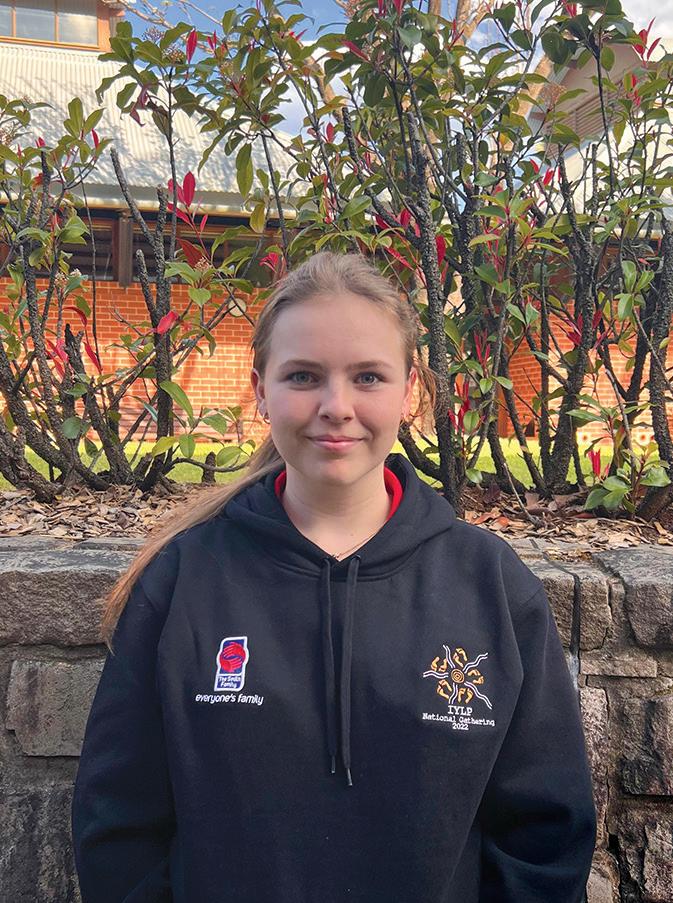

“I really enjoyed getting to know all the other IYLP students from around the country and sharing our experiences on the program,” said Lucy.
“I learned a lot hearing from my peers during the forum on the Uluru Statement from the Heart, which encouraged us to voice our opinions and perspectives on what the statement means to us.
“The workshop also taught me a lot about my culture and heritage, and what it means to be a future leader.
“I feel very lucky to be a part of IYLP and have so many opportunities presented to me now and into my future.”
The Smith Family’s National Manager Aboriginal and Torres Strait Islander Policy, Leanne Smith, said it was wonderful to finally unite these bright students after two years of cancellations due to COVID.

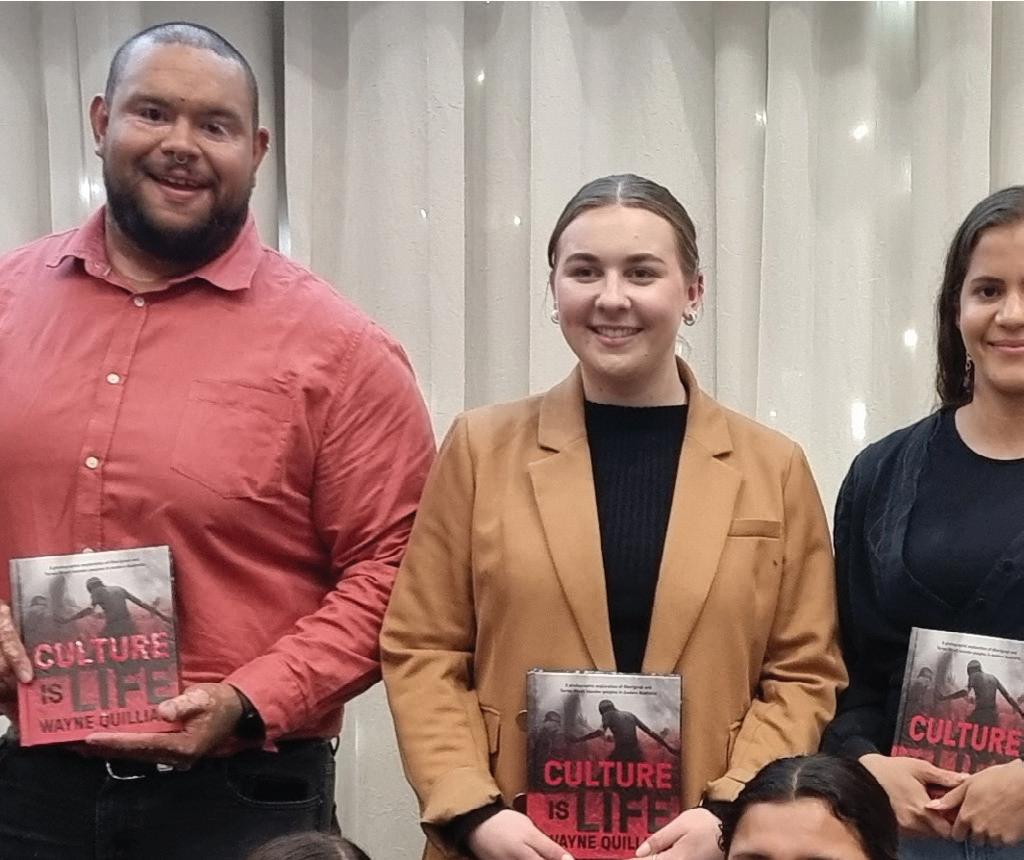

“It is heart-warming to see how much of a transformation the students make in just four days,” said Leanne.
“Over the course of the workshops, you could really see their confidence grow and close connections being formed. By the end, the students leave as stronger young leaders within their communities.”

“I know that I’ve benefited as much as I possibly could from The Smith Family.”
Maddie
“I know that I’ve benefited as much as I possibly could from The Smith Family. They’ve helped me financially. They’ve helped me as a person.
I started on the Learning for Life program in Year 8. At the time, it was just mum and I, and my older siblings. Having that financial sponsorship helped mum pay for books, uniforms and excursions, especially with three other kids.
Last year in Year 12, I was quite proud to be our Student Council President, which was really amazing. Without The Smith Family, there’s no way I would have had the confidence to go for that type of thing. All the workshops that I did, like joining the circus for a few days, or the drama workshops, all of those really helped me to find my own personality and find my voice.
The free phone data from The Smith Family was amazing in Year 12 when I wasn’t going into school because of COVID. I used my phone to hotspot to my laptop so I didn’t have to work off my home wi-fi. Or if I was on a long drive, I’d bring my laptop and hotspot it. The data was essential for me being able to work wherever I could.
During school, knowing there were people out there wanting to help me be better gave me more motivation to make them proud. It wasn’t just my mum who wanted me to succeed; it was a whole other team of people, most of whom hadn’t even met me, but wanted me to succeed.”
Maddie, Learning for Life alumniWe are innovating to provide better support for the students we work with.
Innovation is one of our core values. We are constantly thinking about how we can do things better. We take great pride in using innovation to provide the most effective support for Australian children experiencing disadvantage to help them succeed at school.
We have sought to create a culture of experimentation and team member empowerment, with a focus on the children, families, supporters and partners with whom we work. This ensures everyone we support can thrive in a complex and changing world. In our most recent Employee Engagement Survey, 83% of respondents said they regularly contribute to their team’s innovation efforts.
We continue to listen to the students and families we work with to be more responsive to their needs. We are focused not just on what they need now, but what they may need into the future.
During the year, families provided us with feedback indicating they wanted more tailored information about how we could help them address barriers impacting their children’s education. So, we developed a digital content strategy for Learning for Life families to ensure specific and appropriate responses.
In addition, we have implemented a number of other initiatives to more effectively meet the changing needs of students and families.
The Responsive Innovation Fund (RIF) was developed due to the growing desire – and need – for local teams to innovate and test new activities in their communities to support students in their school attendance and academic advancement. The RIF equips frontline team members to respond more quickly to the support needs of families and students. It was developed as a pilot to test how team members would engage with this opportunity and see what kind of new innovations were being developed. During the year, 27 activities
to improve outcomes for Learning for Life students were funded from the RIF, including enhancements to Learning Clubs, new parental engagement activities, careers/post-school–options activities and a school holiday program. An Aboriginal Practice Consultant was also hired. The RIF scope and processes will be reviewed and refined, with lessons to be incorporated for the new financial year.
The Schools Practice Framework provides teams with evidence-based planning tools, guidance and coaching. It also supports them to plan and work strategically and to intentionally strengthen relationships while continuing to support our partnerships with families and students. Development of the framework began in 2020, and this year team members reported a positive shift in their relationships with schools as a result of drawing on the framework’s approach and tools. We are also hearing from school principals about the benefits of working in this way.
With the support of the Australian Government’s Department of Education, The Smith Family undertook a secondphase pilot of the Catch-Up Learning program in 2022 with over 400 students. The first small-scale pilot of the homebased tutoring scheme for students who needed support with their education and learning was carried out in 2021. The pilot evaluation was very positive and demonstrated greater than expected gains in literacy and numeracy for students experiencing disadvantage and struggling in these areas. Participants also reported an increased love of learning and confidence, which contribute to academic achievement.
Our groundbreaking Pathways, Engagement and Transitions (PET) study focuses on the experiences of young people experiencing disadvantage. It aims to understand their pathways through work and study over time, the factors that influence these pathways, and what more could be done to help young people fulfil their potential beyond the school gates. Over three years (2021–2023), PET is following two cohorts of young people experiencing disadvantage. These young people were in Year 10 or Year 12 in late 2020 and on The Smith Family’s Learning for Life program.
With lockdowns and reduced availability of in-person volunteers, we implemented improvements to how we communicate with team members, supporters and students. This included rapid digitisation to ensure that communications between sponsors and students could continue despite disruptions caused by COVID-19 restrictions.
During the year, we launched two new initiatives in response to sponsor requests to know more about what their students were learning and how they were progressing.
We introduced post-program mail packs to let each sponsor know that their student had participated in a learning and mentoring program, highlighting key positive impacts and benefits for each participant.
We also prompted sponsors to write to their students before they returned to school after Easter. Correspondence between the pair promotes sponsor engagement with the student and provides the student with encouragement and positive re-enforcement for the school year.
Spark innovation programs held during the year, focusing on a range of strategic challenges
Agile Delivery teams focused on innovations that build value for those we support
In addition, we leveraged our new Customer Relationship Management system to improve processing and operational tasks.

As a result, we saved more than 2,000 hours in internal employee and volunteer time spent on daily tasks over the year.
To further enhance our supporter experience, we added a self-learning Answer Bot system to our website, email and eForms. Supporters can now type in questions they want answered at any time of the day or night, and the Answer Bot suggests a selection of relevant articles. As more supporters use it, the Bot will become more accurate with its responses.
Our innovation approach continues to focus on creating change that adds value. To this end, we have continued to seek the voices of our students, families, supporters and volunteers in the work we do. The insights we receive from diverse viewpoints allow us to re-imagine our solutions and processes.
Our in-house Spark innovation program applies a creative, problem-solving framework to the strategic challenges we face as an organisation. This includes recruiting innovation champions from across The Smith Family and training them as our ‘Sparkies’ in best-practice innovation processes.
During the year, there were 19 Spark participants who received intensive experiential development in applying innovation processes and approaches.
A total of 135 team members have now undertaken the program. During 2021–22 we hosted two Spark programs, which focused on a range of strategic challenges. These included optimising the support for our data systems, and ensuring we are leveraging the opportunity presented by increased flexible working.
Since starting our Agile Ways of Working transformation in 2018–19, we have moved some roles into cross-functional delivery teams known as squads. These squads use the Agile scrum methodology to deliver faster, more efficient and more reliable services to our customers.
Over the past two years, we have strengthened the connection between strategy and execution, and optimised our delivery processes through a process of continuous improvement.
During 2021–22, several non-technical business teams began exploring how they can boost agility to refine their delivery, become more customer-centric, and improve team member engagement, development and retention.
Towards the end of the financial year, the Agile Ways of Working team moved from People and Culture into the newly formed Digital and Transformation team, reflecting the stronger organisational focus on business transformation and digitisation. With the support of the Executive Group, we began to define focus areas for transformation and the application of Agile methodology. This will enable The Smith Family to quickly pivot in response to new and emerging opportunities and challenges.

Hearing Children’s Voices is a project of the Katherine Region Communities for Children Facilitating Partner initiative designed to develop a child-centred, placebased approach to understanding what is important to children and making their ideas happen.

The project explores a different way of working with children, building their ability to have their say in a safe and respectful environment and be a genuine voice within their community.
To support this and build the capacity of local organisations to incorporate the voices of children in their work, The Smith Family has developed the Listening to Kids’ Voices in the Big Rivers Region resource.
This resource ensures our work is connected to and guided by what children think is important. It supports our relationships with schools and the community, and ensures we are able to best support children and families in the Katherine region.
The project resources have been piloted in community and the initial feedback has been very positive. Children say they have enjoyed the activities and having their voices heard.
More formal evaluation and testing of the resource is now being planned. We hope to use it regularly in our work role-modelling listening to children’s voices in the community.





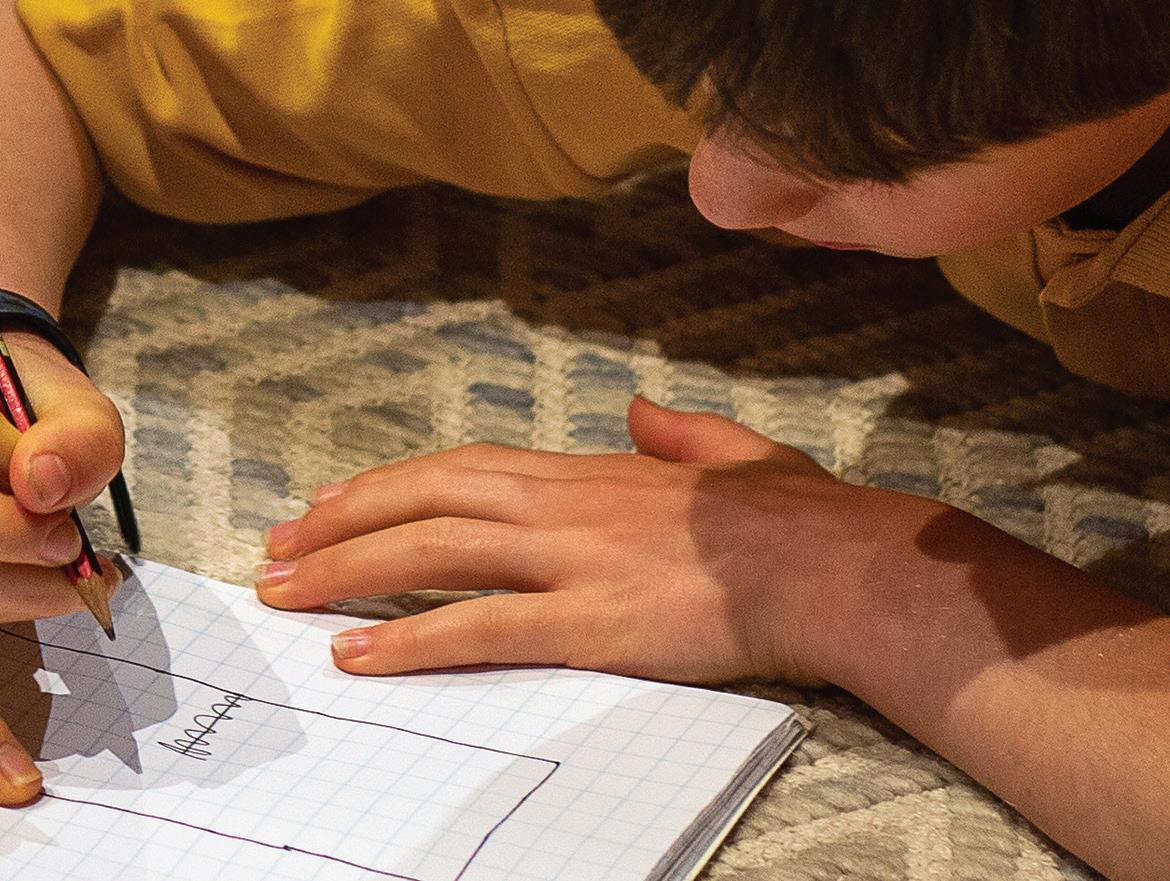


Jean“I don’t believe my kids would have been so successful without The Smith Family.”
“Our kids wouldn’t be able to reach the stars and be successful the way they are without The Smith Family.
We first came onto the Learning for Life program through an Elder because we are Indigenous. I have eight children aged eight to 25. Three have autism and epilepsy.
With kids with disabilities, I didn’t think anybody would want to know about them because the challenges are real. But The Smith Family was amazing. All four of my eldest children were sponsored and because of that assistance, we’ve had two school captains. One of my sons went on to be a recipient of the Tertiary Scholarship. He now runs his own business.
I’ve still got four kids on the program. It’s hard because the school fees are going up; the cost of living is going up. It’s week to week.
The support during the floods and during COVID was amazing. My daughter was doing Year 12 during the COVID lockdown. The Smith Family sent her a laptop with internet access, which enabled her to graduate and pass. Having that technology pack was really important because so much of our budget is eaten up by rent, water, electricity and gas.
The Smith Family sponsors have enabled my kids to stay in school, be given opportunities to keep going and to have things that make us feel included. The belief, positivity, encouragement and support has been huge. I don’t believe my kids would have been so successful without The Smith Family.”
Jean, parent of children on Learning for Life
disadvantage.
Careers support and post-school transitions is a priority area for our advocacy. It is especially important given the ongoing high rates of youth unemployment and under employment that have been exacerbated by the COVID-19 pandemic. Aside from significantly disrupting the employment pathways of young people, the pandemic has also reduced their exposure to the world of work while they’re at school. This has made it harder for them to learn about post school career opportunities.
The three-year Pathways Engagement and Transitions (PET) project is helping us better understand the pathways Learning for Life students take post-school. This includes what influences their choice of pathways, and how they and other young people could be better supported in their choices. The unique longitudinal research project is funded by the Paul Ramsay Foundation.
This year – the project’s second – more than 4,100 young people who were in Year 10 or Year 12 in 2020 and part of the Learning for Life program, completed a survey to help us understand their level of engagement in work, study and training. The survey included questions about school experiences, career information and the support they received at school. It also considered post-school study, training and employment experiences, caring responsibilities, life satisfaction, health and wellbeing, job seeking experiences and the impact of COVID-19.
Just over 84% of the surveyed Year 12 students were in work or study 18 months after leaving school. The survey also showed that almost half of these young people had changed their type of engagement with education and employment since they were first surveyed in 2021 – for example, by moving between study and work.
We also interviewed 60 of the young people who completed the PET survey to get some deeper insights on:
• their experiences of school
• factors leading to Year 12 completion
• sources of support and careers advice
• wellbeing and mental health issues
• their experience of post-school study and work
• factors facilitating or hindering their progress along their chosen pathways.
Data from this nationally significant project can now be used by governments, not-forprofits, schools, universities and business to support new approaches to improving outcomes for young people post-school.
This year, after 18 months of collaboration with the South Australian Department for Education (DfE), we launched the Education Dashboard South Australia (EDSA). This is a Power BI dashboard that gives our team members real-time access to key educational data the DfE holds on our Learning for Life students.
The aim of EDSA is to enable our staff to provide more timely and targeted support to Learning for Life students, in line with our Family Practice Framework. It reflects a shared commitment to improving educational outcomes for young people experiencing disadvantage.
We are grateful to the DfE for the exceptional level of collaboration, innovation and commitment its staff members have shown in developing the dashboard, and to families we work with for supporting this intiative.
In line with The Smith Family’s strong focus on evidence and impact, we also continued to evaluate several of our programs this year. This included the ongoing evaluation of our On PAR initiative and the completion of our Money Talks review. We also started to assess our Keep the Change program and progressed the second phase of our Catch-Up Learning evaluation. The insights derived from these evaluations will help us to improve these programs as well as contribute to the Australian educational evidence base.
A highlight for the year was completing the five-year evaluation of Care2Achieve, a pilot program that aimed to support young women leaving out-of-home care to complete a tertiary qualification. The program was supported by funding from the Queensland Government’s Department of Children, Youth Justice and Multicultural Affairs.
The evaluation showed that almost half of the young women supported by the program completed a qualification and that many were continuing their studies after the pilot with support from a Tertiary Learning for Life scholarship. These outcomes are stronger than expected, given young women leaving out-of-home care are among the most highly disadvantaged groups of young people in Australia.
The evaluation noted the role of our Tertiary Coordinator in supporting young women on the program. It also recognised the young women’s resilience, resourcefulness and determination as contributing factors to their success.
Improving the digital inclusion of families experiencing disadvantage is a key priority for The Smith Family.
In 2021–22, we were delighted to be part of the Advancing Digital Inclusion in Low Income Families research project. The Queensland University of Technology is leading the project, with funding from the Australian Research Council. The project also involves several other universities and nongovernment organisations.
This year was the second year of the project, with families across six communities sharing their insights about – and experiences with – digital technology and what they believe is needed to improve access and bridge the digital divide. The research is also looking at how community and support agencies address digital inclusion, with the overall goal being to improve digital inclusion services and opportunities for families. The project is contributing to both our advocacy and program development work in this space.
Despite the ongoing challenges presented by COVID-19, we continued our public policy advocacy in 2021–22. This included a widely distributed research publication on the evaluation of the first Catch-Up Learning pilot, nine policy submissions, and two COVID-19 Insight Snapshots that shared the perspectives of our families and team members through COVID-19. We also gave 11 significant presentations to external stakeholders.
We also continued to engage with Commonwealth, state and territory governments about how to better support the educational outcomes of children and young people experiencing disadvantage.
We were also pleased to learn that the Australian Government Department of Education allocated $3 million to support the second stage pilot of our online tutoring program Catch Up Learning. This enabled another 400 participants to take part in the program which aims to help combat the adverse impacts of remote learning.
3
policy submissions major external presentations insight snapshots
A groundbreaking education dashboard developed by the South Australian Department for Education is transforming how The Smith Family supports young people experiencing disadvantage.

Education Dashboard South Australia (EDSA) enables frontline team members to access educational information on students on the Learning for Life program in real time, making it easier for team members to respond quickly to educational challenges students and families are facing.
Using the dashboard Family Partnership Coordinators can see up-to-date data on school attendance, and students’ numeracy and literacy. This allows them to see how
the students they work with are going at school and identify students in need of additional support.
Until now, coordinators have only been able to see this data at the end of the school year.
“There used to be such a lag time in getting this information, whereas now we can open the dashboard and see it day by day,” says Smith Family Team Leader Kate Dickeson. “If a student leaves a school and enrols in another school, for example, we can see that straight away.
“It means we can follow up and keep students who need support on our
out of school programs, rather than losing track of them.”
When students are performing well, coordinators can congratulate them, helping to reinforce the value of education and keep kids engaged.
The dashboard was made possible by a data exchange agreement between The Smith Family and the South Australian Department for Education, which required a change of legislation to make happen.
Currently, around 4,000 South Australian Learning for Life students have their real time data available in the dashboard, with more expected to opt into the program in the year ahead.

“What I think is amazing is how much my sponsorship contributes to a child’s wellbeing.”Marianne
“Being able to provide financial support through The Smith Family is a wonderful thing to do.
It makes such a difference for the child and for the parents, knowing that they’re part of a community that cares about them, without knowing anything about them.
What I think is amazing is how much my sponsorship contributes to a child’s wellbeing. Walking into school with the full uniform, the backpack with the school logo, the school hat, my sense is, that child walks into school feeling really, really good about themselves, having a sense of belonging.
Knowing that I can contribute to those few things, and knowing that’s going to have an enormous benefit to that child fitting in, being confident and being part of the whole school community, is really wonderful.
It’s lovely to have compassion and empathy for children in poverty and children who don’t have the basic needs, but that’s of no value at all if you don’t do something about it. The sponsorship that we provide to children is a hand up… to lift them out of poverty. It’s helping them to get the education that they need to then step out of that situation for the rest of their life. It’s helping them to see that they can do it, that they do have the ability to do anything.
When I learn about [my sponsored student’s] successes, it expands my own family. I feel more peaceful inside and confident that my contribution is definitely making a difference for them.”
, sponsor of children on Learning for LifeWe are developing a sustainable funding base to support our long-term ambitions and future growth.
Tens of thousands of sponsors and donors assist The Smith Family. Our work is also generously supported by Australia’s corporate sector, trusts and foundations, universities and governments.
We hugely appreciate all our supporters who enable us to achieve our vision of a world where every child, no matter their circumstances, has the opportunity to change their future.
We recognise the importance of demonstrating the difference our work makes to the children and young people we help. Our research and data track our program effectiveness over time. We report outcomes to our supporters, showing how their contributions help children and young people to realise their potential.
Our sponsors help us enable better educational outcomes for Australian children living with disadvantage. This is particularly important during times of crisis when students who are already struggling can become more disengaged with school and fall further behind with their learning.
This year was a challenging year for attracting new sponsors. The impact of economic factors such as the rising cost of living was felt broadly in the community.
For example, our annual Back to School Appeal, which is usually our largest sponsorship drive, coincided with a significant drop in Australian consumer confidence. However, we still attracted 84% of our targeted new sponsors for the year. This brings the total number of active sponsors to 66,679 at the end of June 2022. Pleasingly, 90.96% of our existing child sponsors continued with their support this year.
As always, we are very grateful for the generosity of Australians. Despite the pandemic, our Christmas, Back to School and Winter appeals all exceeded target. This resulted in us raising $14.5 million in total across the three appeals.
More than 20,000 of our current supporters contributed to our 2022 Winter Appeal, despite the challenging year. With their support, we raised $7.5 million, $2.1 million ahead of our target and in line with the generous response we saw in 2021.
As in previous years, we were privileged to receive bequests from several generous supporters who chose to leave a gift in their Will to support the education of children in need.
This year, their generosity resulted in more than $9.5 million being received from 123 individual estates. We would like to extend our sincere condolences and grateful thanks to their families and friends.
We are also grateful to the growing number of supporters who have let us know they will be leaving a legacy to support our work.
In 2021–22, we received $14.1 million in annualised income donated via our website. This included almost 20,000 supporters making their first donation to The Smith Family.
Meanwhile, our Supporter Acquisition Squad undertook two major projects to improve the usability of our website, redesigning both the My Smith Family portal for supporters and our online donation form. We are very grateful to the many supporters who donated their time to participate in research for these projects.
We commenced a new project to explore emerging fundraising opportunities in support of our new Five-Year Strategy funding needs and future growth. We have also begun testing ideas with consumers using our Smith Family Innovation Framework.
The Smith Family greatly appreciates the extraordinary contributions from philanthropists and major donors. In 2021–22, 544 major donors gave a combined $10.7 million of support.
This incredible support included increased generosity from some of our longest-standing supporters during the pandemic and natural disasters in Queensland and New South Wales. Our major donors gave generously to our emergency appeal in the wake of the devastating floods in these states in March 2022. Two Victorian-based donors contributed $100,000 and $160,000 respectively, to support Learning for Life families to replace lost educational items.
While financial constraints caused by COVID-19 meant that some donors had to stop or reduce their giving, we were humbled to see so many increase their support of our Learning for Life program.
As a direct result of COVID-19, a long-term major donor gave a $250,000 gift to student2student, which helped children learning remotely during COVID lockdowns.
Another major donor from Victoria gave $500,000 to support our Girls at the Centre program in Bairnsdale for Aboriginal girls and our student2student reading program in Tasmania.
Despite the difficulty of hosting in-person events during the pandemic, we were delighted to have the opportunity through our Patron, His Excellency, General the Honourable David Hurley AC DSC (Retd). to welcome major donors and other guests to Admiralty House to officially launch our centenary year.
We are grateful to all our philanthropists and major donors who play such a key role in helping us realise our vision.
Since it was established in 2016, the Children’s Future Education Endowment has held endowments received by The Smith Family.
With the principal amount of endowments invested, earnings are used to support sponsored students on the Learning for Life program from early years through to tertiary studies, consistent with our donors’ instructions.
We are incredibly grateful to have the support and confidence of a growing number of Australians who have given an endowment – thus creating a family legacy and their namesake scholarship that will support children in perpetuity.
The Smith Family’s corporate partnership team continued to steward a portfolio of 87 key relationships throughout 2021–22. We also welcomed 14 companies as new strategic partners during the year, and supported three significant cause-related campaigns in collaboration with our partners Ampol, Asahi Lifestyle Beverages and Officeworks.
We work with our partners to understand what drives their support and to tailor an arrangement that delivers value to their organisation, as well as ours. We also ensure that partners remain connected to our cause by providing regular updates on the practical impact their support is having. Our partnerships encompass a wide range of collaborations. They include partners contributing time and expertise to help us
deliver and improve programs, sustain our organisation and support innovation.
The generosity of our corporate partners saw revenue of $10.2 million received from this area and we thank all partners for their continued support.
In its ninth year, the Officeworks Back to School Appeal was once again a success, raising $1.3 million during one of the most challenging new year retail periods on record. With some states impacted by COVID-19 and customer foot traffic at an all-time low, the Officeworks team went above and beyond to raise money for us.
We again deeply valued the support of long-term partner Optus and its customers this year, with the company continuing its successful Donate Your Data™ program. This initiative helps provide 22,300 young people with internet access to support their learning and is critical in supporting digital inclusion.
Deloitte Australia also supported the funding of digital access packs for our students. This is in addition to providing crucial probono consulting services to assist with a review of The Smith Family’s Learning for Life operating model.
Ampol’s partnership continues to be incredibly important to us. This year, the company’s in-store fundraising campaign raised more than $343,000 to help support the funding of our Learning Clubs. Ampol also sponsors 480 Learning for Life students and is a major contributor through its workplace giving program. Overall, Ampol has provided around $700,000 in funding and many hours of volunteering impact in just under 12 months.
Meanwhile, law firm King & Wood Mallesons launched another successful School of Opportunity program for 2022, involving 11 students. This brings the total number of students who have participated in the program since 2019 to 35.
Pleasingly, seven out of the 24 students who completed the program between 2019 and 2021 have joined the company as employees. Several others are working with major companies, such as ANZ and Deloitte Australia, having successfully leveraged networking opportunities gained through the program.
Our corporate partners dug deep this financial year to support those families impacted by bushfires and floods, donating $120,000 to replace educational items lost during these disasters.
Our Workplace Giving program, which makes it easy for our corporate partners to bring their values to life, continues to go from strength to strength. Matched workplace giving contributions from King & Wood Mallesons alone were enough to support the education of 149 children on Learning for Life for one year. We also hosted a Workplace Giving Webinar in June showcasing the benefits of this kind of giving. We welcomed 24 new workplace giving companies in 2021–22. Our thanks to all our workplace giving partners, including ANZ for their ongoing and substantial support.
A highlight this year was hosting our first Reconciliation Action Plan (RAP) webinar – Be Brave. Make Change through Reconciliation. This gave our partners and their staff an opportunity to hear about our support for Aboriginal and Torres Strait Islander initiatives through our Reconciliation Action Plan. Our corporate partners, King & Wood Mallesons, Officeworks and Pfizer shared their unique stories revealing how they’ve embedded a commitment to reconciliation within their organisations through engaging and empowering their teams to contribute.
Ampol’s partnership with The Smith Family formally commenced in October 2020, however the business has been donating to us for many years, contributing more than $1.7 million in total.
The company currently contributes $300,000 annually to support 480 school-aged Learning for Life students. Additionally, Ampol actively supports our Winter Appeal campaign and staff contribute through Workplace Giving and volunteering and other opportunities.
In June and July 2021, leveraging their national network of stores, Ampol supported our 2021 Winter Appeal. With funds coming from Point of Sale donations and 10c from every coffee purchase, over $343,000 was raised for our Learning Clubs. The campaign was awarded ‘Highly Commended’ in the Best Strategic Partnership category of the 2022 Fundraising Institute Australia National Awards of Excellence.

In 2021–22, Ampol staff generously donated just over $21,000 to us through their Workplace Giving program and corporate matching.
Ampol staff are also encouraged to engage with The Smith Family on a more personal level. This year, opportunities included participating as volunteer mentors for the iTrack mentoring program for students in Year 9 and Year 11, writing Christmas messages of support as part of the Toy and Book appeal, writing birthday messages to sponsored students and conducting staff fundraising activities.
Our sincere thanks go to the Ampol team and their nationwide network of stores for their generosity and commitment to improving the long-term educational outcomes of young Australians living with disadvantage.
More than 170 philanthropic trusts and foundations supported The Smith Family in 2021–22.
We are grateful for the ongoing support of the many trusts and foundations that support our Learning for Life program around Australia. These include the Adam Scott Foundation, the Alter Family Foundation, the Danks Trust, the Fogarty Foundation, the JEM Foundation, The Maria Vasas Foundation, the Salter Foundation, the Snow Foundation, the Stan Perron Charitable Foundation and the Tardalote Trust.
We are also thankful for the trusts managed by our partners at Equity Trustees, Perpetual and the State Trustees Australia Foundation.
Our multi-year partnership continued with the Paul Ramsay Foundation, and allowed us to deepen evidence and research used to inform and advance the national education knowledge base as well as knowledge about issues impacting society more broadly.
The Foundation is also funding the Pathways Engagement and Transitions study, which examines the post-school pathways of young people experiencing disadvantage.
Along with a private donor, The Paul Ramsay Foundation is supporting an extension of our On PAR pilot program. Working closely with the child, their family and school, this early intervention program aims to improve the educational attainment of primary school aged students through case management support and the provision of tailored resources.
Also this year, the Tasmanian Community Fund gave us a five-year grant to ensure families in that state have the digital access they need such as devices, affordable data access and coaching, to participate in our evidence-based student2student reading program.
We are grateful for the continued support of our higher education partners in helping students on our program and thank them for the extra support they have given students especially through COVID-19.
In 2021–22, we began a review to scope and analyse how we can best work with partners to support achievement of our new Five-Year Strategy goals. Our aim is to provide effective support to every Learning for Life student and to help young people to achieve positive post-school pathways.
Our Higher Education Review will span both 2022 and 2023. It will comprehensively review our approach to supporting Learning for Life students to access what they need for their chosen post-school pathways, as well as our broader work in the higher education sector. The results of the review will help inform our approach in the coming years.
We were grateful for the support of Deloitte Australia and a team of third-year students from the University of Melbourne (HACE Consultancy) to assist with preliminary analysis for the review.
Support from the Australian Government and several state and territory governments enables us to deepen our work in communities and assist many more families and children.
This year, we were pleased to continue our work on providing structured, evidence based support for secondary school students with funding from the Department of Education for our Growing Careers Project.
Funding also continued to enable us to deliver the Department of Social Service’s Communities for Children Facilitating Partner initiative in nine communities across Australia. This initiative works to build the capacity of service systems in those communities to deliver better outcomes for children and families, and for our early years numeracy program, Let’s Count and financial capability program, Saver Plus, the latter delivered in partnership with ANZ and the Brotherhood of St Laurence.
With support from the Australian Government’s National Indigenous Australians Agency, our Indigenous Youth Leadership Program continued to help students from remote communities attend high-performing secondary schools across Australia.
We were also delighted to receive funding from the Australian Government to enable us to undertake a second stage pilot of our online tutoring program Catch-Up Learning, focused on addressing learning losses experienced, in particular through COVID-19 lockdowns.
State government funding has also helped us reach many more children and their families across Australia. The funding has allowed us to provide Learning for Life support for students, the important work of the Child and Parent Centres in Western Australia and learning support programs in Victoria and Tasmania.
in funds raised from individuals, major donors, organisations, bequestors and VIEW Clubs of Australia in 2021–22.
Supporters and VIEW Clubs of Australia gave $81.1 million, up 1% on 2020–21. Major donor contributions, including donations to the Children’s Future Education Endowment, totalled $10.7 million. Our corporate partners, trusts and foundations, and universities continued to give generously. Benefactors provided substantial donations, with 123 generous bequestors leaving legacies totalling $9.5 million to help fund our programs.
Our sincerest thanks to all our supporters for providing such vital and continuing assistance for our work.
In the five years to June 2022, 71% of donations and funding from individual supporters and partner organisations has been spent on our community programs. This excludes revenue and expenses related to a funding agreement with the Australian Government during the period, that enabled us to invest in the growth of our flagship program, Learning for Life, to support our long-term sustainability.
Our expenditure on administration averaged 2.3% of total income throughout the year.
We greatly appreciate the extraordinary support of our Patron, His Excellency General the Honourable David Hurley AC DSC (Retd); our Ambassadors, journalist and television presenter Sarah Harris and joint 2019 Australian of the Year Dr Craig Challen SC OAM; and Centenary Champions, author, journalist, broadcaster and comedian Wendy Harmer and Brooke Boney, journalist and television presenter.
We thank them for their tremendous support in raising awareness of our work across the Australian community.
As Patron, the Governor General engaged with Smith Family communities and our supporters. A highlight was the Centenary function hosted by His Excellency at Admiralty House.
Sarah Harris, co-host of Network Ten’s Studio 10, continued her longstanding connection giving generously of her time to raise awareness of how education can change lives. She has connected with the families we help and supporters through her media and social media appearances.
We also thank fellow ambassador, Dr Craig Challen SC OAM, for continuing to support our cause in 2021–22.
Wendy Harmer is a long-time Learning for Life sponsor. She penned a moving article about her own childhood, highlighting the importance of educational support, and promoted our work through the media and at events throughout the year. Brooke Boney joined as a Centenary Champion later in the year and will take part in a number of forthcoming promotional events.





Every year, thousands of people support The Smith Family by participating in community fundraising and events across the country.
This year, we received fantastic support from community groups, schools and individuals despite the ongoing effects of COVID-19. This included the many people who took part in events such as The Smith Family Challenge, The Dream Run, and our Christmas Toy and Book Appeal.
A highlight of the year was the 15th annual Smith Family Challenge, a 100-kilometre fitness off-road adventure under the leadership of Smith Family Board Director Tony Davis. This year teams raised more than $1.3 million, the second highest outcome in the event’s history.

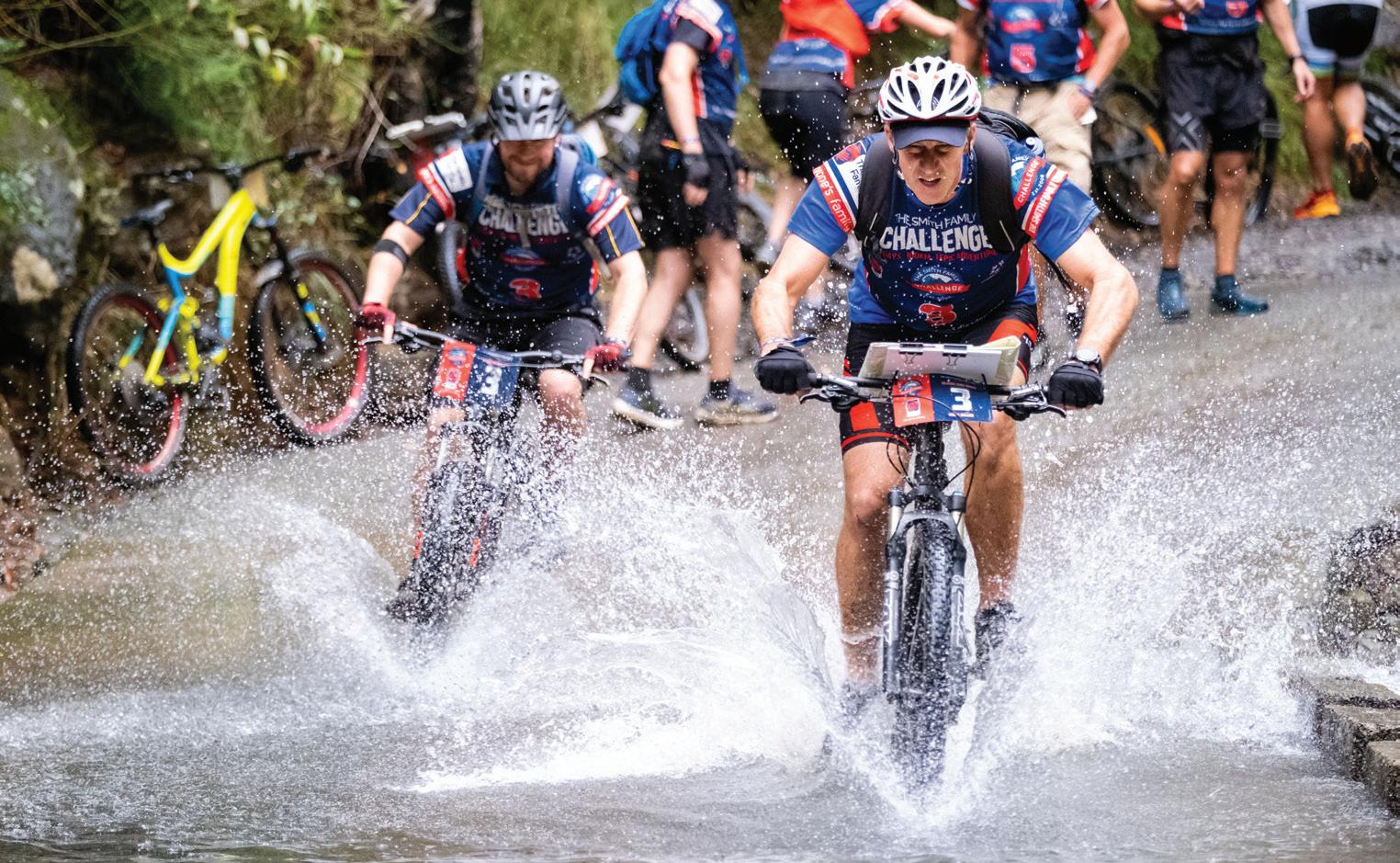
The two-day event attracted 68 participants in 15 teams, including Smith Family CEO Doug Taylor.
In June, we held our month-long Dream Run virtual fitness event for the second time. The event challenges participants to walk or run 25, 50 or 100 kilometres throughout the month. This year’s event attracted more than 4,970 entries and raised over $585,000.
Due to uncertainty related to COVID-19, we pivoted to running our Toy and Book Appeal online. Our team successfully delivered 16,000 digital gift vouchers ensuring that the children and families we support did not miss out on receiving gifts at Christmas time.





All our partners contribute much-valued support for our work. We are grateful for your commitment, expertise and contributions to our work with young Australians and their families.






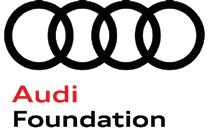
















VIEW (Voice, Interests and Education of Women) Clubs of Australia is the largest community sponsor of The Smith Family’s Learning for Life program. Through this strong, long standing connection, VIEW is proud to enable better futures for young Australians.
This year, members of 289 VIEW Clubs volunteered, fundraised and advocated for The Smith Family in communities around Australia, increasing their support for Learning for Life students to a record high.
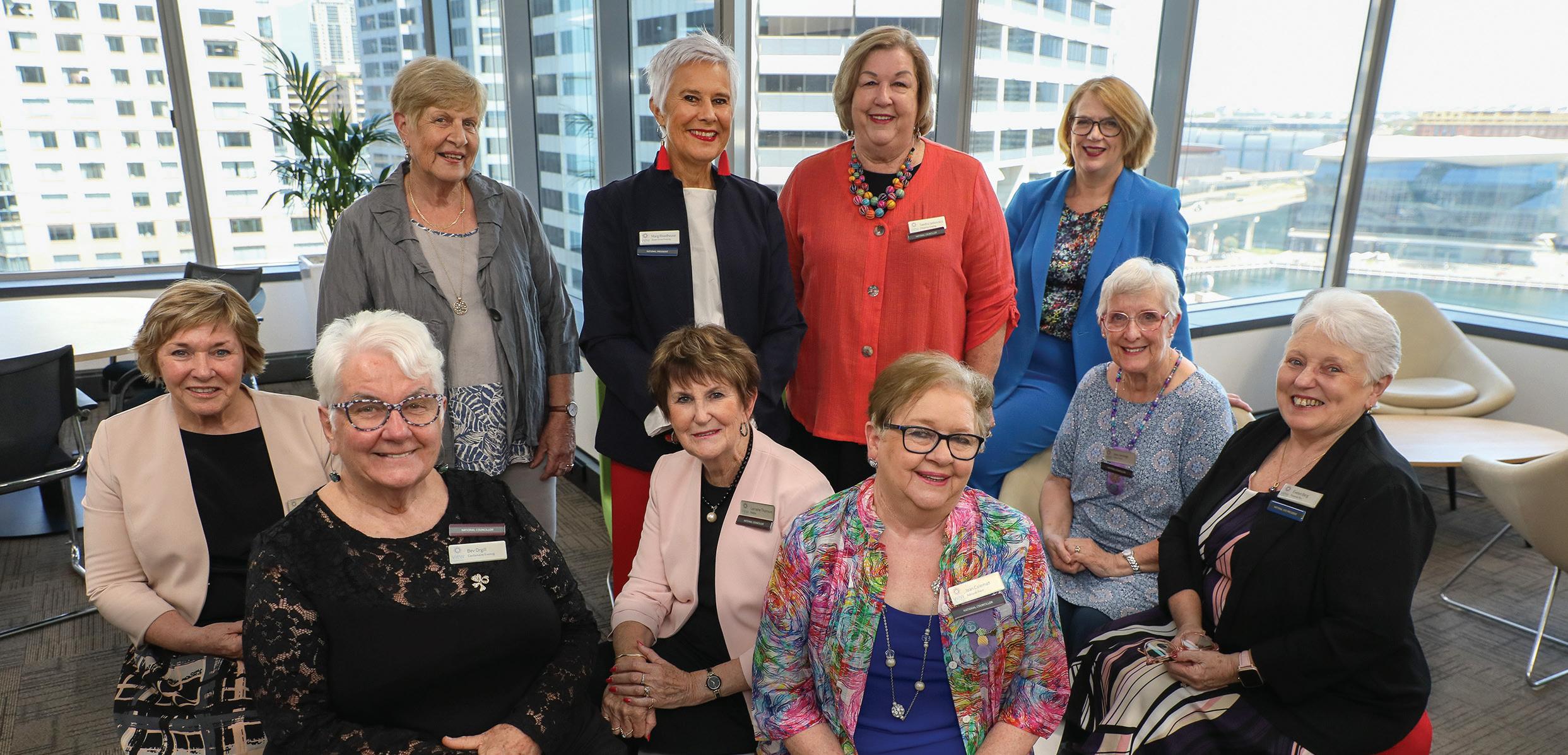
Despite the challenges imposed by the pandemic, VIEW members looked for innovative ways to continue to sponsor Learning for Life students in 2021–22. These included organising online raffles and making and selling items such as celebration cookbooks and face masks. This enabled VIEW to increase its sponsorship nationwide to 1,550 Learning for Life students by June 2022.
Many VIEW members also directly support hundreds of young Australians by volunteering in local Smith Family offices, or through their work as volunteer tutors and mentors in our learning programs.
VIEW was proud to open three new Clubs in 2021–22 – at Tonsley in Adelaide, South Australia, and Mackay and Bundaberg in Northern Queensland. Bundaberg VIEW Club is the 40th VIEW Club in Queensland.
In January, the VIEW 2022–23 National Executive began their term. National President Marg Woodhouse is supported by National Vice Presidents Evelyn Berg and Elizabeth Birch.
The National Executive’s theme is Making Connections Makes a Difference. This reflects VIEW members’ ability to connect with others in local communities, build networks, raise awareness and inspire the wider community about The Smith Family’s important work, thereby extending The Smith Family’s reach and increasing public support of the organisation’s purpose. VIEW also makes a difference in the lives of its members by offering them the opportunity to connect with others in the community through social events, activities, volunteering and giving back to their communities.
Due to the challenges posed by ongoing lockdowns and border restrictions, VIEW postponed its biennial convention to September 2022. However, its Convention 2021 Online Raffle went ahead, raising $29,085 for The Smith Family.
VIEW once again partnered with women’s fashion brand Black Pepper in 2021 to develop a second limited edition VIEW 60+1 commemorative scarf. This was available from Black Pepper’s store network and online, promoting VIEW and The Smith Family with a percentage of sales donated to The Smith Family.
With COVID restrictions limiting face-to-face meetings, VIEW embraced the digital age and pioneered a new pathway for VIEW members, the National Council and the leadership team to meet virtually.
Training sessions for club treasurers, assistant treasurers and other interested committee members were introduced via Zoom to help them learn more about their roles and club finances, as well as help them develop new skills.
VIEW also launched its VIEW Matters magazine in an e-book format, enabling people to access, enjoy and share the magazine online.
This year VIEW also introduced Square Reader to collect donations and accept payments, with VIEW providing training to club members, as needed.
To keep members connected, engaged and updated about activities, VIEW set out to build its online community on Facebook and Instagram. Regular social media posts have helped to build engagement with members, encouraging them to share what VIEW means to them.
Building its social media presence has also helped VIEW reach new audiences and raise awareness of VIEW and The Smith Family.
To celebrate The Smith Family’s centenary, VIEW Clubs introduced the ‘Make a Spectacle’ competition. Members were encouraged to download a pattern for a lorgnette – in a ‘100’ shape – which could then be decorated and displayed at their club’s centenary celebrations.

“I’m a foundation member and inaugural Secretary of Bendigo Evening VIEW Club in Victoria, which formed 28 years ago.

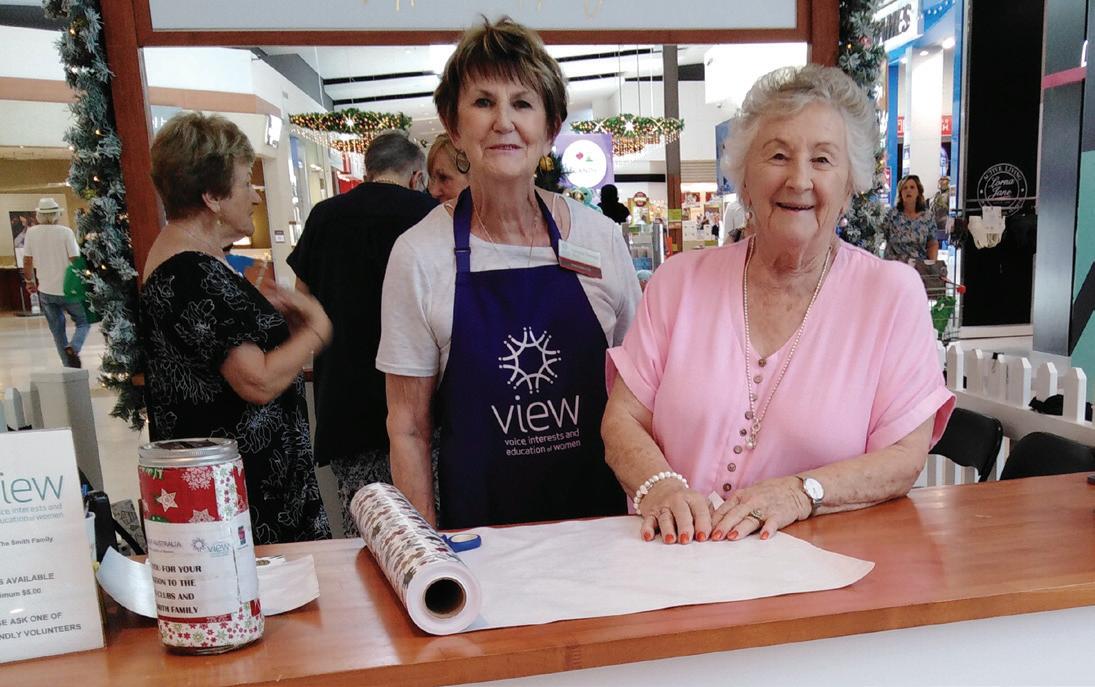
At the time, VIEW looked like something I needed in my life. I was looking to be involved with helping people, meeting others and having fun. I liked The Smith Family’s values and their focus on education.
Over the years I have assisted at my own club and been involved with other VIEW Club events. I have enjoyed every moment and made some lifelong friends. Presently I coordinate the funding for our club’s 16 Learning for Life students and arrange for members to write letters to them.
I volunteer at the local Smith Family Office in Bendigo and assist at Learning Clubs in the local primary schools. I also arrange for members to help at a Breakfast Club at one of our schools.
When I hear a student talk about the Learning for Life support they receive, it gives me a real buzz.

At a recent event I sat next to a Learning for Life alumni student; he was very inspiring. It’s just wonderful to hear how they’ve made it, achieved things with their life and improved everything for themselves and their families.”
Bendigo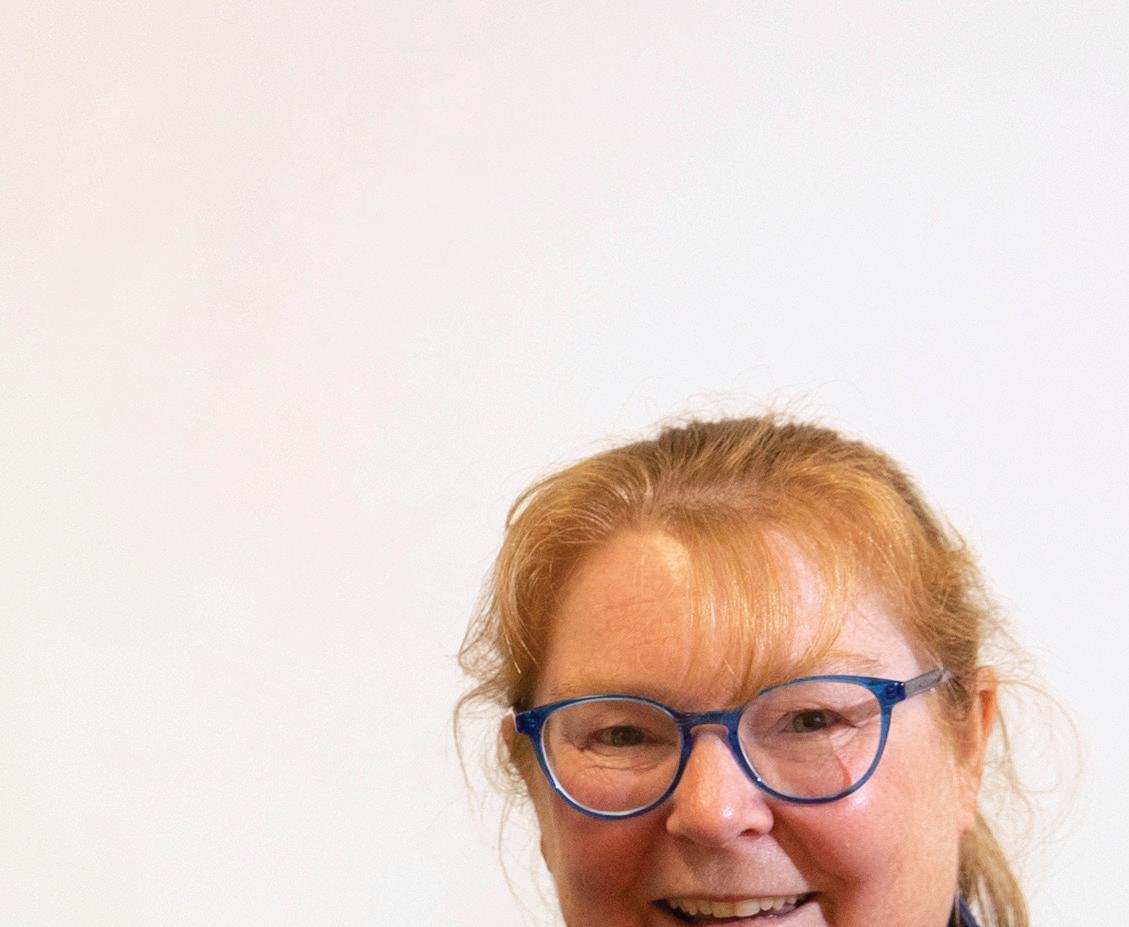




“Without Saver Plus or The Smith Family, it would have been a lot harder.”
“We are drought farmers. We had insurance for our farm but our insurer didn’t pay up. Six years ago, we decided to get out. We owed half a million dollars through loans. Farming is intertwined in my life. My husband is a born-and-bred farmer. Losing our farm was devastating.
My son, Doug, is in Year 5 and my daughter, Zoe, is in Year 3. When Zoe was getting ready to start school, Leanne (from The Smith Family) first told me about Saver Plus. Then the guilt started to set in. It was nearly six months before I decided to ring her.
Saver Plus showed me a lot of new things and ways to save. I learnt about catalogues and the second-hand uniform site on Facebook. There were four mums there, talking about our different situations and sharing great ideas.
We had to save $50 a month, or $12.50 a week. Because money wasn’t coming in regularly (from farm work), we couldn’t put the money away regularly. We started collecting cans and recycling them (to get cash). Then if we had to top the savings up, we put in cash.
It was nearly four years ago, but we’ve still got the account and still try to save. I think there’s $2,200 in it. We’ve used it to buy a computer. It’s now our safety buffer.
Without Saver Plus or The Smith Family, it would have been a lot harder. We would have had to miss out on more. If I hadn’t called Leanne, I don’t think I would have faced our situation.”
Kim, Learning for Life parent and Saver Plus participant
Eligible participants in Saver Plus can receive up to $500 in matched savings from ANZ.
Developments in data and technology are creating major new opportunities to enhance the experiences and improve the outcomes of our students and their families, and our team members and supporters.
We accelerated our digitisation efforts to ensure our families, team members and supporters have the digital tools they need in our increasingly digital world. We also used data to discover how we can better support our families during the pandemic and beyond.
With extended COVID-19 lockdowns affecting many Australians in 2021, we continued our efforts to streamline key processes through digitisation.
As part of these efforts, we switched to using digital gift cards, ensuring students were still able to receive presents from their sponsors on birthdays and other special occasions. Between September 2021 and the end of the financial year, we sent 34,387 digital gift vouchers to students.
Following feedback from students that it was hard to get to a post office during lockdown to send thank you letters to sponsors, we created a one-click link to a page where they could write and send a digital thank you note.
Both initiatives have received overwhelmingly positive feedback. We are now including digital gift vouchers as part of our permanent offering.
The launch of Education Dashboard South Australia gave our South Australian team access to real-time data held by the South Australian Department for Education on Learning for Life students. With this data our team can provide more targeted and timely support to students and families in line with our Family Practice Framework. We are continuing discussions with other jurisdictions to expand this approach.
We are continuing to evolve and mature our policies and practices. This year, we developed a Data Rights Policy, Data Sharing Framework and Data Change Rules for our team members, reviewing and aligning seven existing data governance-related policies and directives with the Data Governance Framework.
We also determined our Program Digitisation Roadmap project structure and delivery approach and commenced modularising and digitising Learning for Life program processes focused on registration and consent.
To digitise and optimise processes to streamline work undertaken by team members across the organisation, we established a Team Member and Volunteer Squad.
In February, we undertook a review and refresh of our digital and IT strategies with pro-bono support from Bain & Company, an external digital transformation expert and members of our Information Systems Advisory Group. As we have transitioned most platforms to Evergreen automated business-management solutions over the past few years, the review found that The Smith Family’s architecture is fit for purpose. Given the findings of the review, our focus in coming years will be on workflow automation, further establishing our technology infrastructure, and progressing towards agile best practice in our ways of working.
We were delighted to see a 6.4% increase in the number of families using the My Smith Family portal in 2021–22, taking the total percentage of registered families to 90%.
We also implemented new tools to listen to feedback from our families. This resulted in us receiving more than 700 pieces of general feedback from families and scholarship students about their Learning for Life experience. We also received more than 15,000 responses to prompted questions.
In addition to existing functionality, Learning for Life families can now complete a digital Student Profile to send to sponsors via the portal. This has proved incredibly popular with families, with 91% saying they prefer using the digital student profile compared to other methods.
Our updates to My Smith Family portal resulted in 90% of families reporting that they were satisfied by the online support they received.
We continued to test new channels –such as parent networks, podcasts and audio streaming – in order to attract new sponsors. Publishing more video on Facebook has also proved a successful way to help people better understand the outcomes of our work and engage with different aspects of our organisation and activity.
During the year, we surveyed our supporters to better understand donors’ experiences and improve our approaches. We have also looked to personalise how we report back to donors – for example with facts and statistics relevant to the impact of their donation in their home state instead of national reporting.
In 2021–22, we redesigned the My Smith Family portal for supporters based on customer feedback. The redesign makes the portal easier to use and ensures it contains information more relevant to our supporters and their giving.
Our Supporter Acquisition Squad – the team charged with enhancing our supporter’s digital experiences – helped migrate our website to the latest software version and upgrade our donation form. Thanks to a website restructure, supporters can now find information more easily and the donation journey is improved with new functions and enhancements. We also added an Acknowledgment of Country to our website in line with our Reconciliation Action Plan.
This year, we continued to digitise our processes and systems to help The Smith Family to better manage our large volunteer workforce.
The introduction of the fit2work platform, alongside the Zendesk email management system, has improved the experience of teams that rely on volunteers within the organisation.
This includes reducing the average time it takes to do background checks and screen volunteers from up to six weeks to two–three weeks. This is a huge improvement for our team members and the volunteers they onboard throughout the year. The use of these systems has also resulted in valuable ‘back of house’ time efficiencies, reducing the time taken to resolve team member enquiries.






In 2021–22 we continued our process of digitisation and using data to better support our families.
One example of how we are adapting is the development of a parent bot for families on the Let’s Count program. The Smith Family’s Let’s Count program has been developed to provide these children with the skills they need for a better start in life. It supports early years’ professionals, parents and carers to help children aged three to five years to notice, explore and talk about maths using everyday activities.
The parent bot is an interactive platform that operates on Facebook Messenger. It uses everyday activities and objects to suggest ways in which parents and carers can support their children’s maths learning.





The tool has a series of activities suggested by the bot which the user can weave into their everyday life. This could include counting steps on a walk, ordering fruit by weight and comparing street signs.
Feedback shows that parents are using this as a starting point for engaging their children in play-based learning, with many saying they are now finding their own maths examples in everyday life.


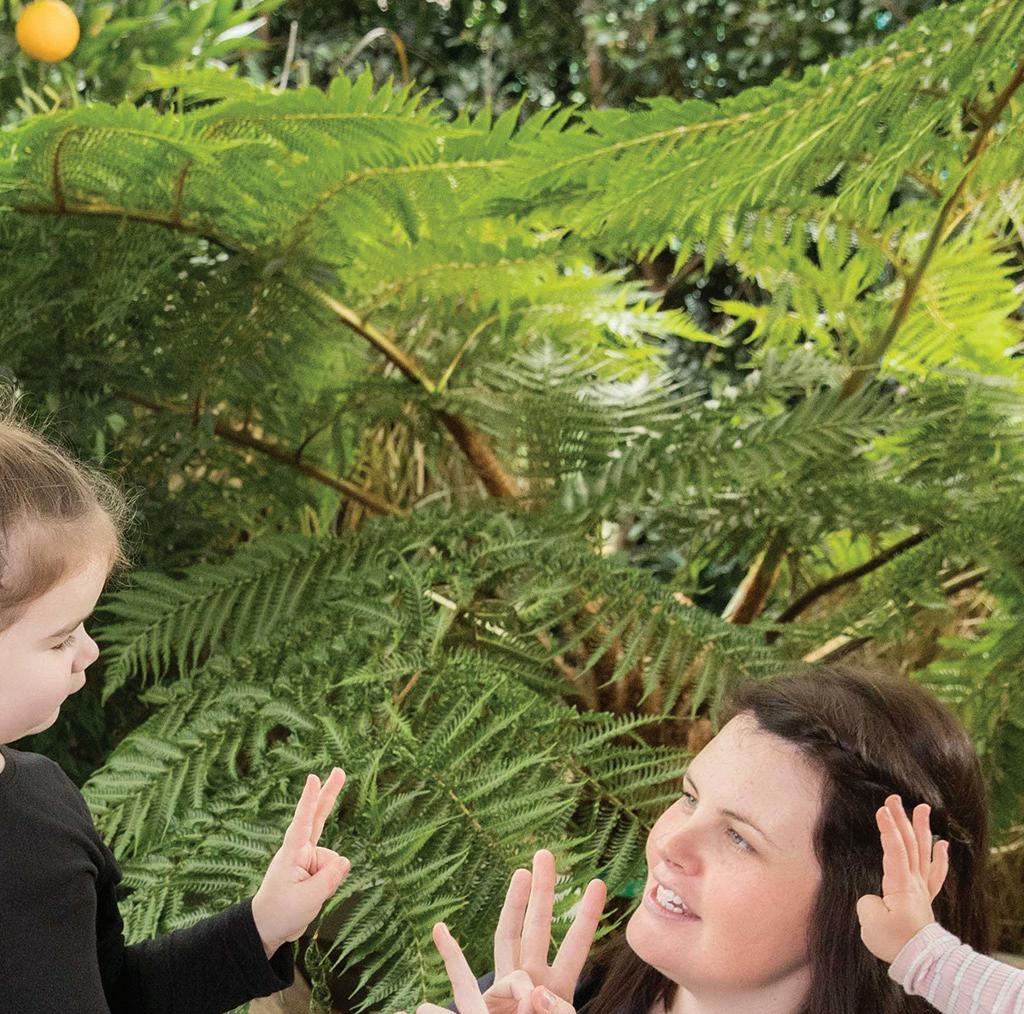
The Smith Family’s Let’s Count Parent bot is just one example of how, through the use of accessible technology, the organisation can play an important role in supporting parents, and in turn, benefitting children, at a vital development stage in their lives.

With funding from BOQ (Bank of Queensland) and the Department of Education, The Smith Family continues to broaden the reach of the Let’s Count program to thousands more families through the use of social media.




“I couldn’t be more thankful for The Smith Family and my sponsor for helping me to get where I am today.”
“I’m the first in my family to finish high school and the first to go to university. I wouldn’t have achieved that without The Smith Family’s support.
I came to Australia in 2011 with my mother and younger sister. We’re refugees, originally from Eritrea in East Africa.
We connected with The Smith Family soon after we arrived. Since then, I’ve always taken every opportunity I could get involved in. I’ve loved every little thing I’ve done with them.
When I finished high school, we moved interstate. My mum was working seven days a week just to buy food and clothes, pay the bills and save for a house.
The Tertiary Scholarship was a godsend. It helped me cover the cost of things like textbooks and public transport when money was pretty tight.
I’m now in my last year of study, completing a Bachelor of Business Management and Innovation with Accounting. I hope to work in a futuristic industry, working towards a net-zero carbon footprint in energy or electric vehicles. I’m looking for a sales or marketing job or graduate program.
The Smith Family helped me organise a cadetship with a renewable energy start-up. It’s been a great experience and I’ve built my knowledge about how an innovative business operates. I even got to give a presentation to the CEO and general managers.
My dream is to start my own business that doesn’t just make money, but also helps people. I couldn’t be more thankful for The Smith Family and my sponsor for helping me to get where I am today and giving me the chance to make my dream a reality.”
Evenezer, Learning for Life Tertiary Scholarship studentWe support our team members and volunteers with the tools, policies and processes they need to thrive.
The Smith Family is committed to providing team members, families, volunteers and all our stakeholders with a healthy and safe environment, and we have integrated health and safety into all aspects of our operations.
As an organisation, we continue to improve on our safety management systems against best practice standards and meet our legislative compliance obligations.
This year, our focus areas for improvement included formalising our approach to work, health and safety (WHS) consultation, clarifying WHS responsibilities of team members and leaders, increasing WHS training, and improving our hazard identification and management process.
In August 2021, we formed a WHS Working Group to maintain our WHS Management System. The group is contributing to the development, improvement and review of safety initiatives that ensure a positive, healthy and safe environment, and which improve our effectiveness in managing WHS risks. Our target of 100% compliance on all site health and safety audits across the country was achieved.
We continued to run training and awareness sessions for team members in 2021–22, including sessions on mindfulness, National Safe Work Month and ‘R U OK?’ training. Working with the Black Dog Institute, we also ran mental health awareness webinars.
Sessions on Managing Stress, Effective Communications Training and Financial Wellbeing were delivered by our external Employee Assistance Provider, in addition to individual and group counselling.
We continued to provide our leaders with the tools they need to support team members, including resources and information covering a range of health and wellbeing topics. All these initiatives were provided to better support our team members to deal with our contemporary environment.
Throughout the year, we also continued to use our CEO’s monthly team updates to highlight ‘Safety Moments’, encouraging all team members to contribute to strengthening our safety culture.
We focus on team member engagement levels because they have a positive impact on a person’s commitment, innovation and overall performance, as well as aiding in their retention. Engaged team members are more likely to feel energised by their work, collaborate and help others, and maintain positive mental and physical health and wellbeing.
By canvassing our team members’ experiences through our Employee Engagement Survey, we gain valuable insights into how we can continue to improve engagement across our organisation.
Our survey, completed by 588 team members in February 2022, resulted in an overall engagement score of 75%, an increase of two percentage points on our 2021 survey. Of the 54 repeated questions asked, we saw an increase in favourable responses for 37 questions.
This year, following survey feedback, we continued to build on the momentum gained to create an environment of open and honest two-way communication. We have worked to actively shift behaviours so that team members feel safe to offer ideas, challenge, bring different perspectives, and to seek and give feedback.
Having joined the Diversity Council of Australia last year, we remain committed to creating an inclusive culture, and this year, team members participated in a wide range
of initiatives. These included workshops on unconscious bias – facilitated by the Diversity Council of Australia – to better understand how such bias can impact our perspectives, judgements and relationships. We also looked at what can be done in our workplace to ensure that biases (conscious or unconscious) are neutralised.
Our team members in every state and territory continued to be affected by COVID-19 impacts in their personal and working lives during 2021–22.
Our primary focus was on ensuring the safety of all team members, volunteers and families that we support, as well as other groups with whom we work closely, minimising their risk of exposure to COVID-19. Throughout the year we remained attentive to the COVID-19 health orders, and the procedures and requirements of the different states and territories we operate in.
During the year, we undertook several team member ‘pulse’ surveys regarding our COVID-19 controls and processes. This was done to better understand what our team members were experiencing in their roles due to COVID-19, as well as factors like working from home arrangements. The surveys revealed very high levels of confidence in The Smith Family’s response to the pandemic and the support provided to team members.
Organisationally, we continued to monitor the shifting health space, especially as it related to the introduction of vaccination policies in the for purpose sector and, more broadly, for national organisations.
In October 2021, all team members and volunteers were invited to participate in an anonymous COVID 19 survey. This was designed to help us better understand team members’ thoughts and concerns surrounding the COVID 19 pandemic and The Smith Family’s efforts to be COVID safe.
In December 2021, we consulted with all staff about our COVID-19 controls, including the possibility of introducing a vaccination mandate. We invited all team members and volunteers to participate in a COVID-19 Controls Possible Vaccination Survey.
Sixty-nine per cent of our team members and office-based volunteers responded and with their feedback a vaccination mandate policy was not introduced. Instead, we decided to continue to follow state and territory health orders.
Overall, team members and volunteers have embraced the healthy practices we have adopted during the pandemic, helping us to build and maintain COVID-safe practices in all our work locations, including schools and other community locations.
In recognition of the additional pressures our team members were experiencing during the pandemic, we introduced several mental health and wellbeing initiatives, including sessions on mindfulness. We also extended an offer of COVID-19 Wellbeing Days (two days leave for all team members to access), in 2021–22. Eighty per cent of team members used this additional wellbeing leave.
To support and fully embed our Practice Framework for the Learning for Life program, we developed and introduced a 13-month coaching initiative for our Learning for Life leaders.
More than 52 leaders are participating in the initiative. It provides blended learning opportunities, including group and individual coaching, facilitated sessions and self-directed learning. So far, we have seen the skills learnt through the program translate into stronger relationships and better experiences for our families and students on the Learning for Life program.
Based on the success of our Ignite for Leaders program last year, we saw increased demand to offer the program to more team members. As a result, we ran a slightly modified program with team members in September 2021, and its success led to a second round in April 2022. Ignite for Leaders aims to provide participants with the opportunity to learn, grow and reflect, to improve their overall leadership capability. Approximately 350 team members have participated in Ignite for Leaders so far.
We continue to meet our obligation under the Workplace Gender Equality Act 2012 to participate in annual reporting. This process helps us to continue to assess the gender equality of our team members in the workplace.
We continue to ensure our workplaces are free from discrimination, bullying and harassment and our policies and procedures reflect this. These unacceptable forms of behaviour will not be tolerated under any circumstances.
We take all reasonable steps to prevent and eliminate discrimination, bullying and harassment, and ensure that team members who raise genuine concerns are not victimised in any way. The Smith Family’s organisational values remain important guides to ensure all team members and volunteers are aware of expectations. Training and guidance are provided when needed.
Our Whistleblowing Policy has recently been reviewed in line with our review framework. It is next due for review in August 2024. The Whistleblowing Policy is available on our website and forms a crucial component of our induction and compliance training for all team members and volunteers.
In 2021, we made change management a priority focus area after reviewing feedback from our Engagement Survey. We acknowledged that improving our capabilities in managing change will help us maintain high performance.
A new Strategic Change Manager role was created to increase our expertise and ensure that any adjustments to how we managed change were sustainable.
To understand opportunities for improvement, we embarked on a collaborative analysis and planning process. This included conducting an organisational change management maturity audit to better understand how to deliver a higher level of organisational change capability.
As a result of this collaborative planning process, we put together a roadmap for Developing Change Capability to be delivered over a two-year period.

Program elements delivered in the first year included:
• redefined roles and responsibilities for change
• a refreshed Change Management Framework to guide practice, including a suite of guiding tools and techniques
• a Leading Through Change training program to build change leadership capability across the organisation
• a Change Community of Practice
• measures of success for the Developing Change Capability program.
The refreshed Change Management Framework was applied within our National Office Relocation Project with great success. A ‘change-success’ survey distributed after the completion of the office move identified an 83% positive satisfaction rating, which was achieved despite the challenges of managing the move during COVID-19.
This year marked the final year of our Technology Strategy, and the key priority was moving 75% of our IT systems into an ‘evergreen’ cloud based environment. As a result of this strategy, we have been able to mitigate end of support risk; improve cyber security, reliability and performance; improve remote accessibility for team members and volunteers; and engage with customers in a more meaningful and efficient way.
Our updated cloud-based customer relationship management system, CONNECT2, is also making a significant impact on day-to-day operations after 12 months in service, with users agreeing that it has improved their productivity.
The Smith Family website and portal platform were also upgraded to incorporate modern website architecture and new ways of managing content, including forms and personalisation features.
Meanwhile, our technology modernisation initiative is helping to create a modern, connected and digitised workplace. We have provided team members and volunteers with anywhere, any time access to systems and data, making it easier for them to work directly with students and families.
We also consolidated the diverse portfolio of telephony systems into a single Microsoft Teams cloud solution, reducing
maintenance effort, operating costs and security risks while providing team members with greater flexibility, especially when working outside our offices.
A highlight for the year was completing a refresh of our Technology and Digital strategy with the generous pro-bono support of Bain & Company and our Information Systems Advisory Group (refer to the Corporate Governance section for membership of this group).
This strategy details our bold vision to support our students to achieve strong educational outcomes and help them thrive in a digital world by delivering safe, personalised and engaging experiences. It also guides us in our communications with all stakeholders to better achieve our aims. It focuses on the functionality, ways of working, and capabilities needed by the organisation to achieve its strategic data and digitisation goals.
To enable our people to better communicate with each other and collaborate through better technology in a post-pandemic, hybrid working environment, we invested in a significant upgrade to our intranet SmithNet, in 2021–22.
The upgrade has provided modern navigation features, improving our staff’s ability to create and share content, extract data, and access content and resources via mobile devices.
In our centenary year, we celebrate and acknowledge our volunteers through the decades. Here’s a snapshot of just some of their support.
1960s
Volunteer Visitors visit people who are lonely and isolated. 1970s
New volunteer opportunities emerge with our education focused programs and in our Commercial Enterprise.
1990s and 2000s
We develop Each One Teach One (later becoming the Home Tutor Scheme), an award winning program to help immigrant and refugee women learn English by linking them with volunteer tutors.
Thousands of volunteers support our work with children and families, along with over 14,000 members of VIEW Clubs of Australia. Education-specific roles include mentoring and tutoring, project-based skilled volunteering and more recently, virtual volunteering opportunities. Many of these involve our corporate and philanthropic partners.
Volunteers have always been an integral part of our organisation and are often referred to as its backbone. Without them, much of our work would not be possible.
This year was another demanding one for organisations that engage with volunteers, with COVID-19 continuing to impact volunteer engagement across the sector and country.
For The Smith Family, ongoing lockdowns and restrictions on our school-based programs limited how – and when – our volunteers could engage in their roles. As a result, the total number of volunteer roles filled decreased by 39% compared to 2020–21. The total volunteer value to the organisation also decreased by 21%.
Roles most affected were one-day roles, with a decrease of 56%. In the past, this group has largely been made up of volunteers supporting our Toy and Book initiative (accounting for 72% of total one-day volunteering roles). However, this couldn’t be run in its usual in-person format this year. Instead, toy and book packs were delivered via vouchers, and our regular volunteers for this activity, (including our corporate partner volunteers), were offered alternative virtual volunteering opportunities.
Another key factor limiting volunteer roles was the difficulties faced by our community program teams in engaging schools and students in core programs such as Learning Clubs, student2student and iTrack due
to the ongoing disruption to schools. Individuals and groups with health concerns were understandably more reluctant to return to on-site activities, prompting a further reduction in numbers.
Interestingly, 32% of total volunteer roles were filled by returning volunteers. This is a result of our focus in recent years on retaining existing volunteers. This has a time and cost benefit, as well as positive benefits for Learning for Life students who work with experienced and deeply engaged volunteer tutors and mentors.
Another positive outcome of focusing on the retention and satisfaction of existing volunteers is that they contributed more hours than in the previous year (an average of 22 hours per role, compared to 18 hours the previous year). This increase can be partly attributed to offering volunteers the flexibility to work from home. It was also prompted by volunteers in some states gradually returning to offices or school sites after lockdown periods.
While there was a drop in overall volunteers, teams across The Smith Family did an excellent job of transitioning many tasks to be done remotely by volunteers who were happy to pivot to a virtual volunteering experience.
With demand for greater flexibility likely to continue to grow, we will focus our planning and innovation efforts in 2022–23 on exploring more ways for volunteers to support our work virtually. This will enable volunteers to support us in ways that align with the changing ways volunteers are donating their time.
The theme of this year’s National Volunteer Week campaign was Better Together, which aligned with our centenary theme of Creating Better Futures Together. This created an opportunity for us to celebrate
how our volunteers and volunteer managers work alongside each other to enable our work in communities, and to extend our reach by adding huge capacity to our operations.
We thanked all volunteers for their gift of time and shared special video messages from our CEO, National Volunteer Manager Lauren Stocker, and a former sponsored student. We were delighted to be able to include an exclusive offer from our partner, Domino’s registered charity Give for Good, with a discount code for our volunteers.
We continue to prioritise the experience and satisfaction of our volunteer workforce. The Smith Family remains a charity of choice in the volunteering sector, with 95% of our survey respondents indicating they would speak positively about their volunteering experience to family, friends and colleagues.
“A feeling of wellbeing [is what I get from volunteering]. I think education is the key to a good life so if I can encourage a young person to continue on and gain skills or further education to help them earn enough to keep them, then that is a good thing.”
iTrack mentor, volunteering since 2018
This year, we continued to support excellent practice in volunteer management and to strengthen the capabilities of team members who lead volunteers.
volunteer roles were filled in 2021–22 by 4,617 unique volunteers (with some volunteers taking on more than one role).
116,038
total hours of service were donated by our volunteers, with an equivalent value of nearly $3.7 million.
97%
of volunteers indicated they were satisfied with the support they received, and 95% indicated they would speak positively to others about volunteering with The Smith Family.
Our Volunteer Engagement team launched a new training module in effective volunteer management practice designed to help team members understand their role and responsibilities and to highlight resources available to them.
During National Child Protection Week in September 2021, we launched new resources to support a greater understanding of the roles and responsibilities that volunteers and volunteer managers have in relation to child protection.
Data and research from across the sector indicate a shift in volunteering behaviour, and trends that have been exacerbated by the COVID-19 pandemic.
These include an increase in demand for more flexible ways of volunteering. To cater to these evolving expectations, we will continue to diversify our offerings. Where we move to virtual experiences, we’ll prioritise creating the optimum experience for volunteers and explore ways to keep volunteers connected to their team and the broader organisation. We will also work collaboratively to consider different ways of enlisting support, identifying how volunteers can support us in the future.
With continuing competition for a declining pool of time-poor volunteers, The Smith Family is adapting to changing times as we look to encourage new people to engage with us who perhaps haven’t volunteered before.
In 2021–22, the sector peak body, Volunteering Australia, started developing the first national strategy for volunteering in Australia in 10 years. The strategy will be designed and owned by the volunteering ecosystem and will provide a blueprint for a reimagined future of volunteering in Australia. We have contributed to early consultations in the discovery phase of this strategy and are paying close attention to early shared insights while providing input from our own volunteers and experience.
“My family came to Australia from El Salvador in 1992. My parents left everything to give us better opportunities. When we arrived, we didn’t have much. I was supported by The Smith Family throughout my entire schooling. They provided assistance for uniforms, excursions and books. What The Smith Family did for my family was incredible.
When I finished school in 2005, support from The Smith Family ended. I became a financial supporter because I was just so grateful. I also put my hand up for any volunteering assistance they needed.
I became part of the iTrack mentoring program and now I’m part of a group of former students who speak to fundraising partners, VIEW Clubs and schools.

The Smith Family set an example for me to help others. Their donors and financial supporters don’t have to do that, but they do. That example made it so much easier for me to do the iTrack program. It feels good to give back, but also to know that maybe someone else will feel the same way as I do and maybe they are able to assist 10 times as much as I can.
I am a big believer in education. Because The Smith Family supported my brothers and I to get through school, none of us now needs that support. They’ve allowed us to break that cycle of needing The Smith Family.
All The Smith Family donations and volunteering do actually make a difference in young Australians’ lives.”
, Volunteer, sponsor and Learning for Life alumni“It feels good to give back, but also to know that maybe someone else will feel the same way as I do.”

“Growing up, I was told that education was the key to lessening the hardships you face.”Sedef
“I was connected to The Smith Family in Year 7. My school knew about my background; how I was an immigrant from a low socioeconomic area and single-parent household.
I came to Australia from Turkey when I was 5, with my mum and my older sister. My mum doesn’t speak English very well, so it’s been quite hard for her to find any jobs. She’s been a carer for my auntie, and earns an income through that, but it isn’t much.
Growing up, we experienced struggles that some kids might not ever think about. Money was quite tight; everything was planned. We had to think about our savings and how much money we could spend on things. The Smith Family sponsorship helped us feel more comfortable financially. We were able to experience normal student activities. It also gave my mum a massive sense of relief, knowing that her daughters were being supported.
I’ve always wanted to go to university. Growing up, I was told that education was the key to lessening the hardships you face. I’m now in my second year studying for a Bachelor of Psychology (Honours).
With my Tertiary Scholarship, I’ve been able to buy all the equipment I need to study, such as a new laptop, textbooks and stationery. Support from my Smith Family Tertiary Coordinator gives me the strength to keep excelling in my studies.
I didn’t realise all the opportunities that being part of The Smith Family would unlock. I wouldn’t be the person I am, the person who loves to get out of their comfort zone and learn new things, without the support of The Smith Family.”
Sedef, Learning for Life Tertiary Scholarship student
We are transparent and accountable for how we manage our assets.
Chairman and Non-executive Director since 2019. Chairman of Screen Australia, The Centre for Independent Studies, Willow Technology Corporation, the National Catholic Education Commission and Aldus Group; member and former Chairman of the UNSW Business School Advisory Council; Chairman of the Markets Taskforce Expert Advisory Board and the Financial Regulator Assessment Authority within the Department of Treasury; Non-executive Director of QBiotics Group, member of the Council of the National Gallery of Australia; former CEO of Macquarie Group Limited; and former Chairman of Police Citizens Youth Club NSW.
Non-executive Director since 2013. Principal of Rooty Hill High School and Past President of the NSW Secondary Principals’ Council; member of the Project Management Board for the Department of Education, Skills and Employment’s Online Formative Assessment Initiative; member of the Teachers Mutual Bank Educational Advisory Panel; and former board member (2011–21) and now life member of the Greater Western Sydney Giants AFL Club.
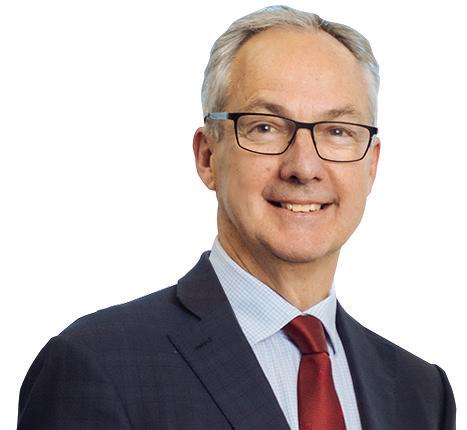


Non-executive Director since 2016. Adviser and investor in a range of early-stage tech ventures; founding Director and past Chairman of Quantium, a global leader in applied data analytics and technology; Director of Seaford Foundation; and former Chairman and Director of peak marketing body the Association for Data-driven Marketing and Advertising.
Non-executive Director since 2016. Chairman of Hancock Victorian Plantations Holdings Pty Ltd and Aquasure Pty Ltd; Deputy President of the Victorian Chamber of Commerce and Industry; and experience in senior management roles in agribusiness, manufacturing, distribution, retail, technology and transport companies in Australia and overseas.



Non-executive Director since 2013. Chairman of NSW Electricity Operations Group (TransGrid); former Chairman and Non-executive Director of AGL Energy Ltd, Port of Brisbane Pty Ltd and Arrium Ltd; former Non-executive Director of Nuplex Ltd; former Managing Director and CEO of CSR Ltd; inaugural Chairman of Cement Australia Pty Ltd; former Senior Vice-President and Country CEO Australia and NZ of Holcim Ltd; and former member of the UNSW Business School Advisory Council.
Non-executive Director since April 2019. Deputy Vice-Chancellor People & Organisation at Victoria University; former Pro Vice-Chancellor Indigenous, Director of the Ngunnawal Centre and Professor of Information Technology at the University of Canberra; member of the Victorian Chamber of Commerce and Industry’s Executive Council; fellow of the Royal Society of NSW; member of the Golden Key Society; and visiting fellow at the Centre for Aboriginal Economic Policy Research at Australian National University.
Non-executive Director since 2019. Chair of the Board of Taxation; Non-executive Chair of Alexium International Group Limited; Deputy Chair of the Australia Council for the Arts; Non-executive Director of Australian Rail Track Corporation, Resolution Life Australasia and Venues NSW; former senior partner with KPMG; more than 29 years’ experience in professional services; and a member of Chief Executive Women.

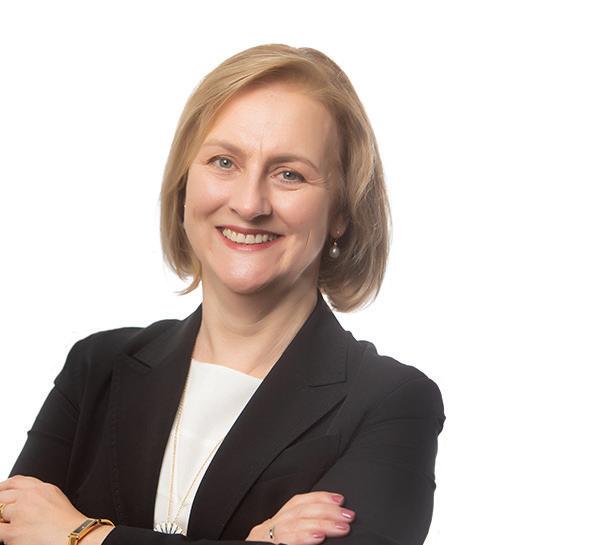

Non-executive Director since 2013. Director of the John James Foundation; former Secretary of the Department of Families, Housing, Community Services and Indigenous Affairs (2004–11), and of the Department of Education, Science and Training (2003–04); and former Managing Director of the Health Insurance Commission (1998–2003).
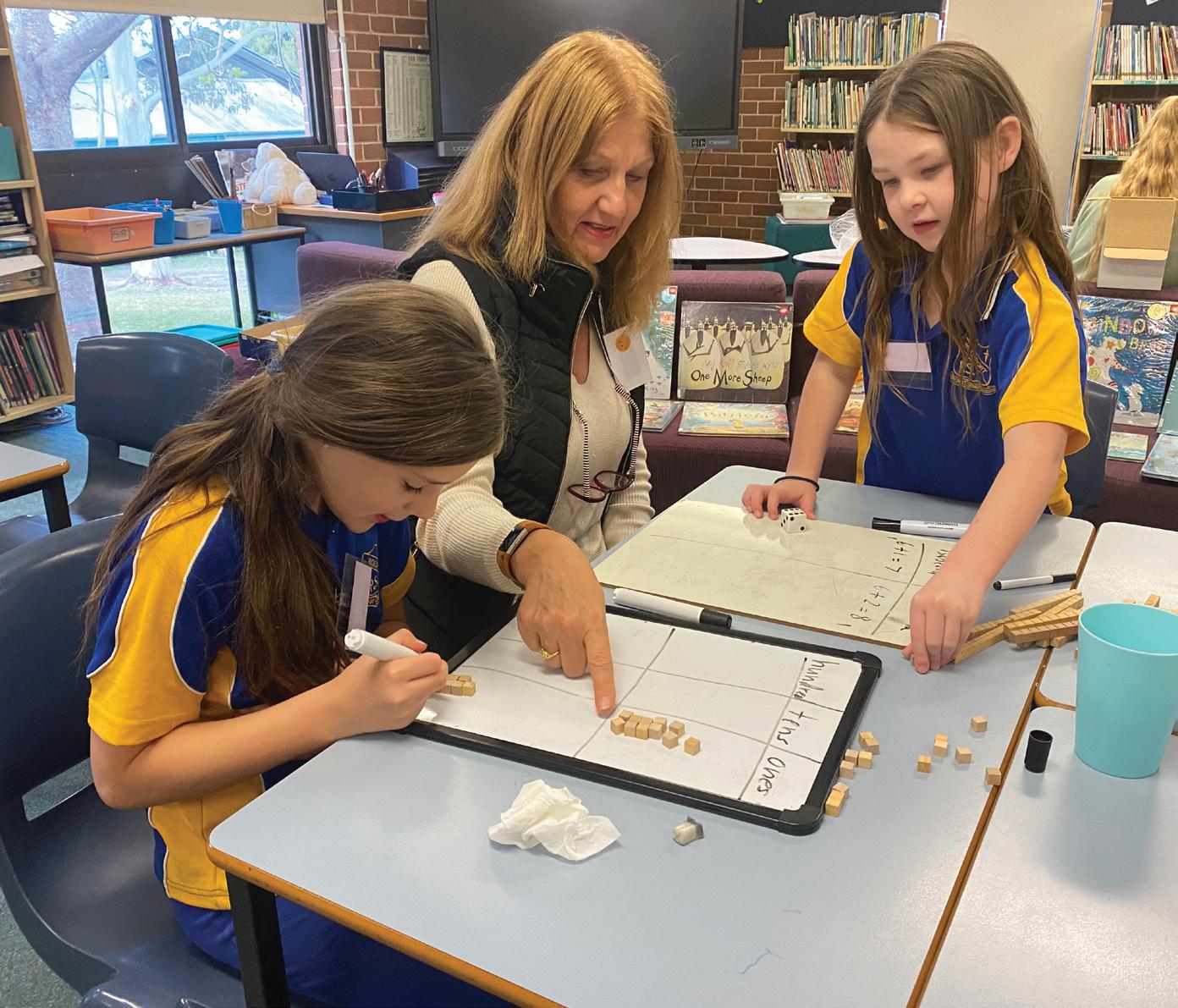
Non-executive Director since 2012. Non-executive Chairman and Director of the Hospitals Contribution Fund of Australia Ltd; Non-executive Director of Aurecon Group Pty Ltd, Boral Ltd, Goodman Ltd, Goodman Funds Management Ltd, Metcash Ltd and Sydney Airports Group; member of the UNSW Council and former member of the Board of Partners of Corrs Chambers Westgarth; former non-executive director of Coca-Cola Amatil Ltd, Westfield Corporation and HSBC Bank Australia; CEO of PwC Australia (2008–2012); former chairman of PwC Foundation; 15 years in senior roles managing PwC’s Assurance and Business Advisory Services, its Consumer and Industrial Products team, and its Audit, Technical, Risk and Quality groups; and member of the UNSW Business School Advisory Council.

Chief Executive Officer (CEO) and Executive Director. Former deputy CEO at Uniting NSW and ACT; Chairperson Warakirri College; Non-executive Director of WorkVentures and The Australian Centre for Social Innovation; Advisory Board member of the Centre for Social Impact; and a community fellow with Western Sydney University.
The Council of Governing Members consults with the Board of Directors on The Smith Family operations, ensuring they align with the objectives stated in our constitution.
The Council comprises the voting membership of the organisation and is responsible for electing Directors and approving the annual accounts.
In addition to the Directors, the members of the Council are Arun Abey AM, Christine Bartlett, Barbara Cail AO, Professor Ross Griffith, Jane Hemstritch, John Kelly AM, Chris Leptos AM, Christine McLoughlin, James Millar AM, Linda Bardo Nicholls AO, Greg Ruddock, Doug Snedden, Rosa Storelli, Paul Tobin, Richard Turner AM, Terry Walsh, Richard Warburton AO, Geoff Willmott, Emeritus Professor Ken Wiltshire AO and Marg Woodhouse.
Bruce Baird AM (a Director from 2008 to 2012) and Anne-Louise O’Connor (National President of VIEW in 2020 and 2021) retired from the Council during the year.
We thank all Council members for their support during the year.
The Board of Directors is the decision making body of The Smith Family, responsible for governance and oversight of management. Its role and responsibilities are governed by the constitution and a comprehensive Board charter.
In 2021–22, the Board consisted of nine honorary Non-executive Directors and the CEO, with each person offering a range of skills in addition to their board-level experience in various sectors.
No new Directors were appointed during the year under review.
The Smith Family’s management conducts a detailed induction process for new Directors to ensure they have a comprehensive understanding of our organisation, strategy and programs. This enables each Director to start contributing as soon as they are appointed.
The functions of the Board’s subcommittees in 2021–22 are outlined below.
The Corporate Governance Committee supports the Board in developing governance principles; identifying candidates for membership of the Board, its committees and the Council of Governing Members; and reviewing The Smith Family’s constitution.
The Endowment Fund Committee oversees our investment policy and mandate for the Children’s Future Education Endowment. Over time, its earnings will provide a secure revenue stream to fund student scholarships and community work as part of our Learning for Life program.
The primary responsibility of the Finance, Audit and Risk Committee is to assist the Board in its governance role of ensuring the organisation operates prudently, effectively, efficiently, ethically and legally.
The Committee monitors the effective management of finances and investments, to ensure that funds are available to meet our operating requirements. The Committee also monitors the effectiveness of risk management policies and procedures, and reviews and addresses complaints received under the Whistleblowing Policy.
The People and Culture Committee provides advice on remuneration policies and practices and ensures The Smith Family complies with employment-related statutory and regulatory requirements, including those concerning workplace health and safety.
In addition to these formal Board committees, several other groups operate within our organisation.
This national women’s organisation, with just over 14,000 members, exclusively supports the work of The Smith Family. The organisation’s National Council leads the overall development of VIEW and administers policy. The new National Executive began its two year term in January 2022. The National President is Marg Woodhouse. Two National Vice Presidents, Evelyn Berg and Elizabeth Birch support her.
The National Councillors are Brenda Caligeros, Joan Coleman, Robyn Garard, Pauline Glover, Sandra Jankovskis, Jean Jennings, Bev Orgill and Lorraine Thomson.
The following groups advise the CEO and offer their expertise to senior management on issues and projects.
The Advisory Group on Issues Concerning Aboriginal and Torres Strait Islander Peoples is chaired by John Rawnsley. Its members are Pauline Brown, Lenique George, Dr Jeff Harmer AO, Alara Hood, Jesse King, April Long, Professor Peter Radoll, Kieran Ryan, Todd Sculthorpe and Wanda Wellington. Meetings are also joined by The Smith Family’s Aboriginal and Torres Strait Islander team members, Karen Parter and Leanne Smith. Jayde Geia and Jodie Wyatt stepped down from the group during the year.
The Financial Capability Advisory Group completed its planned work during the year. It was chaired by Michael Herring. Its other members were Robert Drake, Paul Ivers, Janet Liu, Gregory Mowle, Irene Payne, Di Robinson and Caroline Stewart.
The Information Systems Advisory Group is chaired by Doug Snedden. Its other members are David Boyle, David Ellis, Richard McLaren and Anthony Robinson.
The Let’s Count Project Advisory Group is chaired by The Smith Family. Its members are Alan Dougan, Belinda Emms, Associate Professor Ann Gervasoni, Dan Leach-McGill, Penny Markham, Emeritus Professor Bob Perry and Gillian Pratt. Sean Barrett and Sarah Swain stepped down from the group during the year.
The Principals Advisory Group is chaired by Smith Family Director Christine Cawsey. Its members are Natalie Banks, Malcolm Elliott, Caroline Fishpool, Donna McDonald,
Andrew Pierpoint, Lee Sibir, David Samaha, Karen Snibson and Jarrod Williams. Anne Denham and Zachary Taylor stepped down from the group during the year.
We thank all members of our advisory groups for their ongoing service and support.
As a registered charity, The Smith Family is required to meet the Australian Charities and Not for Profits Commission (ACNC) Governance Standards. These standards are a set of high-level principles for how an organisation should be governed, and we review our compliance with them on a regular basis.
Our policy framework ensures that our practices are aligned with:
• the ACNC Governance Standards, which include an obligation to act consistently with Australian laws
• our contractual commitments, including those under key government funding arrangements
• community expectations
• our values.
Key areas of focus during the past 12 months included the ongoing development of our records management framework. This is within the context of broader work we are undertaking in relation to data governance and implementing our Supplier Code of Conduct. We developed the code in 2021 to minimise the risk of modern slavery issues in our supply chain and operations.
We also reviewed and updated in house Child Protection training material and extended its availability to include volunteers working with children or child data. We continued to streamline our process for checking correspondence between sponsors and sponsored students to improve privacy and child protection risk management.
Work concluded on key aspects of our Data Governance Foundations including Data Sharing Framework, Data Rights Policy, Data Change Rules, Business Terms Glossary and Data Governance Framework update.
The Smith Family’s Risk Management Framework guides us in managing risks at the organisational, functional and programs levels. Customised risk management processes and controls at each level support our ability to identify, analyse, evaluate and manage risks.
The work of our Risk Management function is aligned with ISO 31000 Risk Management –Guidelines. The results of regular risk reviews are reported to management; the Finance, Audit and Risk Committee; and the Board.
The Smith Family is a company limited by guarantee. Its ABN is 28 000 030 179.
Its status as a public benevolent institution (PBI) was confirmed in July 2005 by the Australian Taxation Office as part of its registration requirements for all non-profit entities. Its status as an income tax exempt charity and a deductible gift recipient was also confirmed. The organisation enjoys certain other tax concessions and exemptions consistent with its status as a PBI. These relate to goods and services tax and fringe benefits tax.
The Smith Family is registered with the ACNC, as required by law in the following states and territory, where it raises funds:
New South Wales Registration number CFN 11049 – renewable in 2024
Queensland Registration number CP 4163 – registration is ongoing subject to meeting certain annual financial reporting requirements
South Australia Registration number 778 – ongoing subject to continued registration with the ACNC
Tasmania Registration number 170 – registration is ongoing
Victoria Registration number 10290 – ongoing subject to continued registration with the ACNC
Western Australia Registration number 20352 – renewable annually
Australian Capital Territory Registration is ongoing subject to continued registration with the ACNC
(FIGURES IN $’000S)
2017–18 2018–19 2019–20 2020–21 2021–22
Fundraising
Donations and corporate support 64,484 73,672 92,152 111,197 110,797 Bequests 7,110 5,882 9,090 9,773 9,462 VIEW Clubs 5,518 5,297 5,300 2,856 4,558 Government funding 23,450 26,563 35,814 26,366 19,824
Children’s Future Education Endowment 405 1,631 1,169 836 835 Commercial operations net contribution 396 7 10,702 31 59 Investment and other income 3,146 3,348 1,831 3,297 312 Total Income 104,509 116,400 156,058 154,356 145,847
Policy and programs (64,400) (72,136) (82,325) (87,247) (102,943) Fundraising (28,529) (32,004) (32,598) (30,251) (28,523)
Promotion and profiling (3,277) (3,945) (4,358) (4,852) (6,359) Administration (2,440) (2,569) (2,314) (2,507) (3,424) VIEW Clubs (3,878) (3,865) (4,198) (1,516) (3,198) Total Expenditure (102,524) (114,519) (125,793) (126,374) (144,447) Surplus/(Deficit) 1,985 1,881 30,265 27,981 1,400
Since 2017–18, total income has grown by an average of 8.7% annually, rising from $104.5 million to $145.8 million in 2021–22.
Donations and corporate support
Government funding
Children’s Future Education Endowment
In 2017–18, income from individual donations and corporate support was $64.5 million. By 2021–22, it had risen to $110.8 million, representing average annual growth of 14.5%.
The Smith Family received $23.5 million in government funding in 2017–18. In 2021–22, it received $19.8 million, representing an average annual decline of 4.1%.
In 2021–22, The Smith Family received $0.8 million into its Children’s Future Education Endowment.
Overall expenditure has risen from $102.5 million in 2017–18 to $144.4 million in 2021–22.
Policy and programs
As our revenue has grown over the years, we have been able to extend the reach of our work. Expenditure on community programs increased on average by 12.4% annually, rising from $64.4 million in 2017–18 to $102.9 million in 2021–22.
Fundraising
Fundraising expenditure totalled $28.5 million in 2021–22. Despite the increase in fundraising activity over the five years, this is broadly in line with the fundraising expenditure in 2017–18.
Administration Expenditure of $3.4 million on administration support in 2021–22 represented 2.3% of total income, increasing from 1.6% in 2020–21.
Estimated value of volunteering contribution
The estimated value of the contribution of volunteers in 2021–22 was $3.7 million compared to $12.1 million in 2017–18. Between 2020 and 2022, volunteering was affected by COVID-19.
Students participating in a SmArts musical theatre program at the Western Australian Academy of Performing Arts

Fundraising and bequests $120.2m





VIEW Clubs $4.6m
Government funding $19.8m
Children’s Future Education Endowment $0.8m
Other commercial activities surplus $0.1m
Investment and other income $0.3m
Community programs $102.9m
VIEW Clubs $3.2m
Administration $3.4m
Promotion and pro ling $6.4m
Fundraising $28.5m



Children’s Future Education Endowment
Investment and other income
160 140 60
100
80
40
20
Recycling Operation and other commercial activities net contribution
VIEW Clubs
Government funding
Donations, corporate support and bequests
160 140 60
120
100
80
40
120 0
Promotion and pro ling
Fundraising
VIEW Clubs $ million $ million 0
Administration Years Years FY22 FY18 FY19 FY20 FY21 FY22 FY18 FY19 FY20 FY21
The Smith Family Annual Report 2021–22 76
20

In February 2022, we moved our national office to new premises in Sydney. This was completed successfully despite the pack-up being impacted by COVID-19. We were hugely grateful to receive generous donations from our corporate partner Ampol for the move, including of office furniture and other office-related goods.
This annual report is the fifth and final in a series reporting on our 2018–22 Five-Year Strategy.
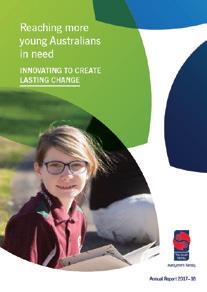

2021 Workplace Giving Excellence Awards – Gold award for the Most Innovative Charity/Employer Partnership category (with Pearson Australia).
2022 Fundraising Institute Australia’s National Awards for Excellence –Highly Commended in the Best Strategic Partnership category (with Ampol).
2022 Fundraising Institute Australia’s National Awards for Excellence –Highly Commended in the Fundraising Impact through Creativity category (for our ‘I had no idea’ child sponsorship television advertisement).


2022 Direct Selling Australia, Annual Conference and Awards – Community award for our longstanding partnership with Rodan + Fields.
GPO Box 10500
Sydney NSW 2001 Website: thesmithfamily.com.au
T Freecall General Enquiries: 1300 326 459
E tsfmktg@thesmithfamily.com.au
T Freecall Donations: 1800 024 069
E supportercare@thesmithfamily.com.au
Volunteer Coordination Unit T 1300 397 730
NATIONAL OFFICE
Level 17, 2 Market Street
Sydney NSW 2000 T 02 9085 7222 F 02 9085 7299
E tsfmktg@thesmithfamily.com.au
Level 17, 2 Market Street
Sydney NSW 2000
T 02 9085 7178 1800 805 366
E view@thesmithfamily.com.au
Australian Capital Territory
Canberra
Corner Launceston and Easty streets
Woden ACT 2606
T 02 6283 7600 F 02 6282 1725
Belconnen | Gungahlin | Murrumbidgee Tuggeranong



New South Wales
Level 5, Westpoint Office Tower, 17 Patrick Street, Blacktown T 02 9895 1233 F 02 9633 9897
Albion Park | Auburn | Bathurst Blue Haven | Chester Hill | Claymore Coffs Harbour | Cranebrook | Dapto | Dubbo Fairfield | Goulburn | Jesmond | Lithgow Macquarie Fields | Miller | Mount Druitt Nowra | Orange | Raymond Terrace & Karuah | Seven Hills | Shellharbour Springfield | Tamworth | Taree | Tarrawanna Tuggerah Lakes | Wagga Wagga | Warrawong Wiley Park | Windale | Wyong


Darwin
Level 1, 6 Pavonia Place Nightcliff NT 0810 T 08 8985 6841
Darwin | Katherine | Palmerston
Queensland
Brisbane Level 13, 340 Adelaide Street, Brisbane, QLD 4000 T 07 3115 6200 F 07 3337 6424

Brighton | Brisbane | Caboolture | Cairns Coomera | Gladstone | Inala | Ipswich Logan | Mackay | Maroochydore | Redlands Rockhampton | Southport | Toowoomba
Townsville
South Australia
Adelaide
Level 2, 187 Rundle Street Adelaide SA 5000 T 08 8224 1400
Christie Downs | Elizabeth Downs Elizabeth Vale | Hackham | Morphett Vale Port Adelaide Enfield | Port Augusta Salisbury North | Smithfield Plains | Whyalla

Tasmania Hobart
Suite 4, Level 3, ‘Galleria Building’ 31-35 Salamanca Place Hobart TAS 7000 T 03 6223 2627


Brighton | Burnie/Wynyard | Glenorchy North-Eastern Launceston

Victoria Melbourne Level 7, 50 Queen Street Melbourne VIC 3000 T 03 9473 4300
Bairnsdale | Ballarat | Bendigo | Brimbank Broadmeadows | Collingwood | Dandenong Epping | Frankston | Geelong | Lakes Entrance Morwell | Shepparton | Werribee
Western Australia
Perth
Level 1, 16 Victoria Avenue Perth WA 6000 T 08 9265 5555
Armadale | Bunbury | Collie | Gosnells Kwinana | Midland | Mirrabooka | Rockingham
“I didn’t realise how many opportunities were out there that I can take.”
“Knowing I’ve helped someone change their attitude towards reading and made a difference in their life makes me feel very proud. It’s such a blessing.”
Jeremy, student2student
“Having these kinds of programs that are reaching out, where people can feel not ashamed to come forward and say, ‘okay, I do need help’. They are so important.”
“The Smith Family has always been by my side ever since I was a little kid in primary school. The long term support has definitely had a massive positive impact on my life and my family.”
Ahmad, Learning for Life student
GPO Box 10500 Sydney NSW 2001
T Freecall: 1300 326 459
E tsfmktg@thesmithfamily.com.au
TheSmithFamilyAustralia SmithFamily_org thesmithfamilyaus
thesmithfamily.com.au